



































www.salga.org.za















































TACKLING HOMELESSNESS IN JOHANNESBURG




WE NEED ENGAGED, ACTIVE AND RESPONSIBLE CITIZENS SECURING DEMOCRACY IN THESE TIMES OF CYBER WARFARE INSIDE: REVIEWING LOCAL GOVERNMENT FUNDING I THE

I UNLOCKING MZANSI'S ECONOMIC POTENTIAL I CAN OUR MUNICIPALITIES RECOVER THEIR DEBTS?
POWER OF YOUR VOTE

TB is serious but curable
Tuberculosis is a serious public health issue in South Africa but it is curable, writes DR THEMBA HADEBE, clinical executive at Bonitas Medical Fund. He discusses how contagious it is, the symptoms and the importance of getting medical attention and adhering to the treatment regimen.
South Africa has 87 per cent of the estimated tuberculosis (TB) cases worldwide – the main driver of infection is HIV, according to the Department of Health (DoH).
South Africa has committed to reducing new TB cases by 80 per cent by 2030, compared with 2015 levels. Clinical data presented by the World Health Organization indicates that our country is meeting some of its targets, but still too many people are falling ill and dying.
TB has a big impact on the economy, not only in terms of healthcare expenses but also lost productivity due to absenteeism. While not everyone has access to private medical care, public healthcare facilities offer free testing and treatment by the DoH.
WHAT IS TB?
TB mainly affects the lungs but can also be found in any other organ. It is caused by an organism (germ) called mycobacterium tuberculosis, found in the sputum of someone with TB of the lungs. The organism usually destroys the soft tissue of the lungs, resulting in difficulty breathing and, in severe cases, coughing up blood. Left untreated, TB can cause death.
HOW IS TB CONTRACTED AND WHAT ARE THE SYMPTOMS?
The disease is passed from one person to another when the germs spread via airborne microscopic droplets from a sneeze, cough or saliva of an infected person. The incubation period is six weeks.
Symptoms include:
• excessive coughing
• chest pains
• loss of appetite and weight
• low-grade fever
• night sweats
• chills
• coughing up blood
In children, the symptoms may present as a cough for two weeks or longer, loss of energy and appetite and often a mild fever.
Those most at risk of contracting TB include:
• people living with HIV/AIDS
• those living in the same house as someone with TB
• anyone who has had active TB in the last two years
• diabetics
• residents of informal settlements
• children under five
• alcoholics and smokers
• mineworkers
• prisoners
• pregnant women
CAN YOU HAVE TB AND NOT BE SICK?
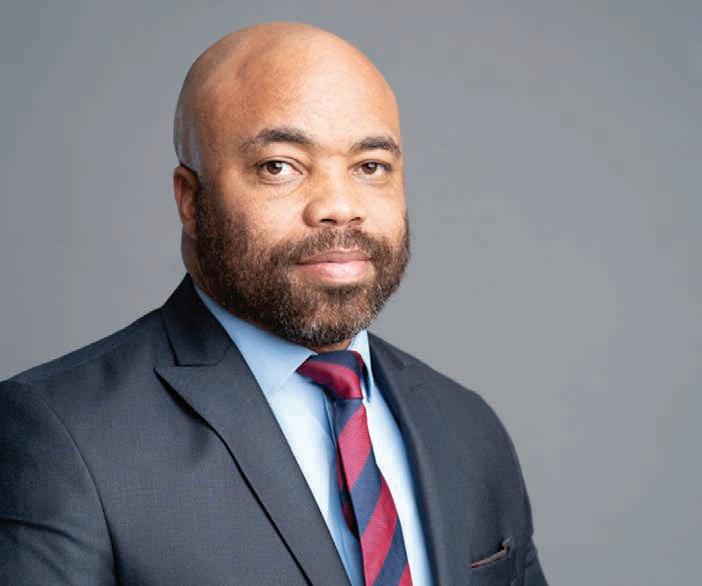

• Wash hands with soap and water
• Immunise all babies within one year of birth
• Stay healthy
• Stop smoking
• Open the windows if you are living with someone with TB – fresh air blows the TB germs away and sunshine kills the TB germs
TB IN THE WORKPLACE
TB can be “latent”, in other words, it’s in your body but not active and therefore you cannot spread it. However, if your immune system becomes weak, the TB can become active and you become ill.
HOW IS TB DIAGNOSED AND TREATED?
Diagnosis of TB is quite complex since many symptoms can be similar to those of other common lung diseases. South Africa has moved towards more intensive and active methods of identifying cases, for example, by screening all those attending primary health clinics. TB testing and treatment is free.
TB is treatable. However, medication must be started as soon as possible and it must be taken regularly as per the instructions. TB patients must stick to the treatment regimen. It takes six months for TB to be cured completely but within two weeks of starting treatment, it is no longer infectious.
HOW CAN TB BE PREVENTED?
• Complete the treatment
• Cover your mouth and nose when coughing or sneezing
If any employees display TB symptoms, they should stay home and limit contact with others as much as possible until the results from a TB test are known. They can return to work after two weeks of treatment.
BON ITAS



For more information: www.bonitas.co.za
IMAGE: SUPPLIED
ISSUE 44 VOICE OF LOCAL GOVERNMENT 1 ADVERTORIAL | BONITAS MEDICAL FUND
Dr Themba Hadebe
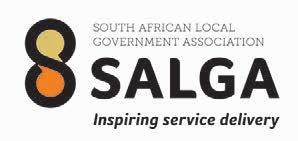

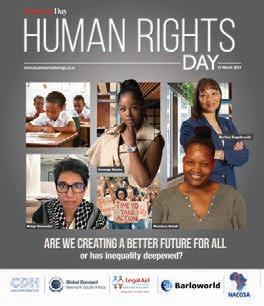






2 VOICE OF LOCAL GOVERNMENT ISSUE44 CONTENTS ISSUE 44, INSIDE THIS ISSUE 3 SALGA FOREWORD Onsequidipis nonecat eum exereni squiat idebis repreperchil GLOBAL PERSPECTIVES 6 IN BRIEF – A roundup of news 7 TRADE AND TOURISM The Africa Free Trade Continental Area agreement IN THE SPOTLIGHT MUNICIPAL FINANCIAL WELLNESS 12 REVIEWING LOCAL GOVERNMENT FUNDING 16 MUNICIPAL DEBT AND RECOVERY 18 MUNICIPALITY FINANCIAL VIABILITY UNPACKED ACTIVE CITIZENRY 20 ENGAGED, ACTIVE AND RESPONSIBLE CITIZENS 22 THE POWER OF YOUR VOTE TECHNOLOGY 24 CAN WE SECURE DEMOCRACY IN THESE TIMES OF CYBER WARFARE? PROFILE 26 SEDIBENG PRIMARY SCHOOL IS A SHINING EXAMPLE OF HOW DATA-DRIVEN EDUCATIONAL INITIATIVES CAN TRANSFORM TEACHING AND LEARNING WATER 29 FAILING TO DELIVER CLEAN WATER; THE WATER-SHEDDING CRISIS SKILLS DEVELOPMENT 34 THE UNION OF EDUCATION AND EMPLOYMENT IS A POWERFUL CATALYST FOR PROGRESS, MAXIMISING OPPORTUNITIES FOR SKILLS GROWTH AND DEVELOPMENT ENERGY 40 GRID FLEXIBILITY; RENEWABLE ENERGY YOUR MUNICIPALITY AT WORK SERVICE DELIVERY 44 THE CERES RIVER RESTORATION PROGRAMME 46 TACKLING HOMELESSNESS IN GAUTENG 47 KAROO SMALL TOWN REGENERATION CONFERENCE 48 OPTIONS FOR RELIABLE ELECTRICITY SUPPLY IN KWADUKUZA 50 SALGA’S 4TH MUNICIPAL LEGAL PRACTITIONERS’ FORUM
we creating a better
for all
has inequality
RE AD Director, Marketing & Communication: Tebogo Mosala Communication & Marketing Officer: Marelda Boshielo Marketing Officer: Valerie Setshedi PICASSO EDITORIAL & PRODUCTION TEAM Content Manager: Raina Julies, rainaj@picasso.co.za Contributors: Lee-Anne Bac, Heather Dugmore, Jacques Farmer, Niveshen Govender, Matthew Hirsch, Lineo Kolobe, Itumeleng Mogaki, Busani Moyo, Gilchrist Mushwana, Parmi Natesan, Dwibin Thomas Copy Editor: Brenda Bryden Content Co-ordinator: Natasha Maneveldt Head of Design: Jayne Macé-Ferguson Senior Designer: Mfundo Archie Ndzo Advert Designer: Bulelwa Sotashe Cover Images: Media Lens King/istockphoto.com, privetik/istockphoto.com, supplied, Ruvan Boshoff. © Sunday Times Sales Project Manager: Jerome van der Merwe, jeromem@picasso.co.za Sales Team: Jacqueline Bezuidenhout, Natasha Hendricks, Frank Simons Production Editor: Shamiela Brenner Subscriptions and Distribution: Fatima Dramat, fatimad@picasso.co.za Business Manager: Lodewyk van der Walt Lodewykv@picasso.co.za Management Accountant: Deidre Musha General Manager, Magazines: Jocelyne Bayer Hill on Empire, 16 Empire Road (cnr Hillside Road), Parktown, Johannesburg, 2193 Postal Address: PO Box 12500, Mill Street, Cape Town, 8010 www.businessmediamags.co.za Copyright: Picasso Headline and SALGA. No portion of this magazine may be reproduced in any form without written consent of the publisher. The publisher is not responsible for unsolicited material. Voice of Local Government is published quarterly by Picasso Headline. The opinions expressed are not necessarily those of SALGA or Picasso Headline. All advertisements/advertorials and promotions have been paid for and therefore do not carry any endorsement by SALGA or the publisher. Follow and like us to keep up to date with SALGA news. Printing: CTP Printers, Cape Town Published by Picasso Headline, a proud division of Arena Holdings
Are
future
or
deepened?
30 years of local
government progress
In pursuit of a free, nonracial and equal society,
As South Africa marks 30 years of democracy this year, one of the things it brings to mind is how, from the very beginning of democracy, local government served as the cornerstone for the transformation and integration of all South African communities, regardless of gender or race.
Reflecting on this journey and the numerous turning points, local government is honoured to have contributed to this remarkable history towards the realisation of a free, nonracial and equal society.
In this regard, considerable progress has been made in expanding access to the provision of basic services to communities, despite the severe financial and capacity constraints municipalities face in meeting the needs of everyone, everywhere.
• Access to electricity for lighting went from 58.1 per cent in 1996 to 94.7 per cent in 2022.
• Over four out of five (82.4 per cent) households in the country have access to piped water either inside their dwelling or in their yard.
• 98.4 per cent of households have sanitation, with 70.8 per cent having access to flush toilets.
• Two-thirds (66.3 per cent) of households in the country had their refuse removed by a local authority once a week.
This progress has also been possible with municipalities continuing to
guarantee the human rights of those most vulnerable by offering free basic services to impoverished households.
FINANCIAL STABILITY REQUIRED
However, we need to confront the challenge concerning the financial sustainability of the local government system if we are to increase accessibility and raise the standard of service delivery for all.
The role communities and citizens can play in changing this situation for the better is crucial, and Asisho! Let’s Say It!, a nationwide SALGA campaign encouraging citizens’ responsibility for the social and economic development of their communities, put out the call. Now, municipalities are putting in more effort to collect R306.7-billion in unpaid charges for services provided to households, businesses and government departments and agencies.
These are just a few important themes covered in this edition of Voice of Local Government. Let us collaborate to build a financially viable local government system that benefits all citizens as we reflect on the past 30 years of our democracy and formulate plans for the next 30.
on its role
Public discourse is still dominated by issues such as municipalities’ challenges to raise revenue from declining tax bases and the urgent need to review the equitable share formula for local government, which only provides municipalities with 9.8 per cent of all revenue raised nationally.
MAKE YOUR VOTE COUNT
We implore every South African to vote in the national and provincial elections set for 29 May; doing so will contribute to the development of our cherished democracy.
These elections occur in the same year South Africa marks the 30-year anniversary of its first democratic elections, and people should value their right to vote because it will ultimately determine the path not only of their own lives, but also of the nation.
Let us collaborate to build a financially viable local government system that benefits all citizens as we reflect on the past 30 years of our democracy and formulate plans for the next 30.
SALGA Editorial Team
SALGA reflects
I SSUE 44 VOICE OFLOCAL GOVERNMENT 3 SALGA FOREWORD

DID YOU KNOW?
The African Continental Free Trade Agreement (AfCTA) is a high-ambition trade agreement that aims to progressively bring together all 55 member states of the African Union, covering a market of more than 1.3 billion people with a comprehensive scope that includes critical areas of Africa’s economy, such as digital trade, investment and trade in goods and services, among others. By eliminating barriers to trade in Africa, AfCFTA aims to significantly boost intra-Africa trade, particularly trade in value-added production and trade across all services sectors of Africa’s economy.
Source: AfCFTA.org
PREFERENTIAL TRADE UNDER AfCFTA
On 31 January 2024, President Cyril Ramaphosa and the Minister of Trade, Industry and Competition, Ebrahim Patel, announced the launch of preferential trade under the African Continental Free Trade Agreement (AfCFTA). This paves the way for South African companies to export duty-free or with reduced duties to 12 African countries.* It may also encourage multinational companies to invest and manufacture in South Africa. More countries are expected to implement the agreement in 2024, and it is hoped that within the next few years, all 55 member states of the African Union will be operating under AfCFTA.
AfCFTA was originally slated to launch in 2020, but was delayed for various reasons, including the COVID-19 lockdowns. Initially, the agreement only applies to physical goods, including manufactured goods, such as farming equipment and processed foods, but is expected to expand to the services economy, tourism, e-commerce and logistics.
IMPLICATIONS
The actual benefits of AfCFTA for any particular industry will depend on various factors, including the effective implementation of the agreement, investment in infrastructure and skills development and the ability of South African businesses and government to adapt to new opportunities.
Multinational companies producing or selling products that originate in South Africa may also have free trade access to participating countries across the continent.
The potential for growth and increased competitiveness across various sectors is undeniable, making AfCFTA a significant development for South Africa’s economy. Source: EY.com; Department of Trade and Industry
*Southern African Customs Union (SACU) countries include South Africa, Botswana, Lesotho, Namibia and Eswatini (formerly Swaziland), plus Algeria, Cameroon, Egypt, Ghana, Kenya, Rwanda, Tunisia and Mauritius, which are still working on putting systems in place to trade.
THE GLOBAL PERSPECTIVE
6 In brief – a roundup of global news
7 TRADE AND TOURISM – Unlocking economic potential

FAST FACT
AfCFTA is the largest free trade area in the world, measured by the number of countries participating.
Source: AfCFTA.org
IMAGES: IMAGESSUPPLIED
I SS UE 44 VOICEOF LOCAL GOVERNMENT 5

LAUNCH OF NEW ECD EDUCATION PROGRAMME CHANGE IDEAS
A staggering 57 per cent of South African children in the Early Childhood Development (ECD) phase of their education are not on track for cognitive and/or physical development. To help change children’s futures, the Sanlam Foundation has redesigned its education strategy and launched its Education Programme, in partnership with the Department of Basic Education, to focus on ECD and primary school education in selected schools across four provinces. Pipeline 2 of the programme will focus on interventions in secondary schools. Nozizwe Vundla, head of the Sanlam Foundation, says: “Targeted education interventions are the only way to change the course of this country. Every child has the right to the best possible educational start. To begin with our programme will reach 8 408 learners and 40 teachers across 20 ECD centres and 14 primary schools in KwaZulu-Natal, Western Cape, Eastern Cap, and Gauteng. We’ll re ne and scale as we receive the monitoring and evaluation data. This is a long-term commitment, following a pipeline approach, from ECD to primary and secondary school.”
Read the six policy briefs to date, here

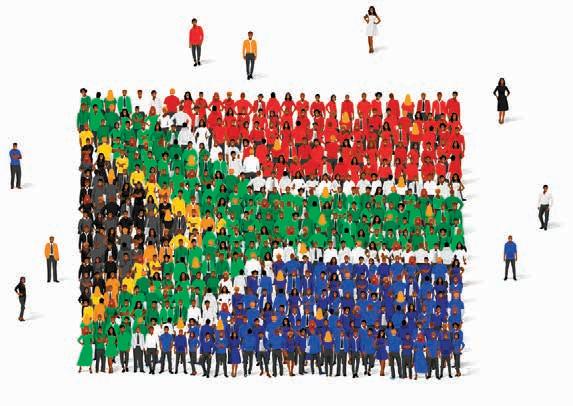
60.69 million DID YOU KNOW?
South African population as of January 2024

South Africa’s population by age
•
•
•
•
•
•
Source: https://datareportal.com/reports/ digital-2024-south-africa
IMAGES: SUPPLIED
•
•
•
•
•
•
RE AD IN BRIEF
6 VOICE OF LOCAL GOVERNMENT ISSUE44 CURRENT AFFAIRS
Unlocking economic potential
The free movement of people between countries – a central tenet of the Africa Free Trade Continental Area agreement – could boost South Africa’s tourism sector exponentially, writes LEE-ANNE BAC, an advisory director at BDO South Africa

The Africa Free Trade Continental Area (AfCFTA) agreement unlocks tremendous opportunities for local and global businesses to enter into and expand throughout new markets across the continent. Envisioned as a catalyst for growth, the AfCFTA holds great promise for the South African tourism sector. However, complexities surrounding its implementation have posed challenges, delaying the potential benefits.
The World Economic Forum’s AfCTA Insight report estimates that by 2050 Africa will be home to 2.5 billion people, with its combined business and consumer spending reaching $16.12-trillion. With these numbers in mind, the AfCFTA agreement symbolises a new dawn for the continent and represents immense growth opportunities for African markets.
South Africa – the nation with the most developed economy on the continent –stands at a pivotal juncture where this agreement has the potential to unlock new opportunities for its tourism industry.
Yet, although many African countries have already implemented the agreement, South Africa is lagging.
One of the most promising aspects of the agreement for the South African tourism sector lies in the facilitation of the free movement of people, which will substantially increase the number of business and leisure travellers within the continent. This free movement could
translate into increased demand for hotels and accommodation, air and land transportation and much more, thereby driving growth, generating additional income and creating much-needed employment opportunities.
A CATALYST FOR INTRA-AFRICA WORK TRAVEL
As the gateway to Southern Africa, South Africa is emerging as a hub for professionals seeking regional work experiences. The free movement of people facilitated by the AfCFTA would encourage Africans to explore South Africa as a destination for leisure and work. Business travellers and professionals, drawn by the prospect of seamless travel, would contribute to a surge in tourism-related activities. Conferences, conventions, and collaborative projects could become commonplace, further solidifying South Africa’s status as a preferred destination for business and leisure.
South Africa’s diverse tourism offerings could benefit from increased intra-Africa travel. As professionals explore work opportunities within the continent, they are likely to extend their stays to experience South Africa’s unique cultural, natural and historical attractions. Collaboration becomes increasingly attractive once free movement is allowed. By tapping into the strengths of neighbouring nations and fostering cross-border partnerships, South Africa can create unique travel packages that showcase the diversity of experiences available across the continent. A collaborative approach would enrich the tourism landscape and attract a broader spectrum of visitors from across the continent.
The agreement could also ensure that skilled workers continentwide can move freely between franchised brands to ensure quality control and standards across the board – a move that has
massive benefits for the businesses in terms of extending quality, enhancing skills development and fostering the careers of valuable employees, and for travellers who will return to places that have met or even exceeded their travel needs.
COMPLEXITIES AND DELAYS IN IMPLEMENTATION
Despite the immense potential, AfCFTA’s implementation faces hurdles in South Africa. The complexities come from myriad factors, including regulatory frameworks, logistical challenges and the need for harmonisation of policies across diverse nations. These complexities have led to delays, preventing South Africa from fully capitalising on the benefits the agreement promises.
One of the primary complexities the country faces is aligning its national regulations with the overarching framework of the agreement. This process requires extensive negotiation and compromise to ensure that the nation’s interests are represented while contributing to the greater good of African economic integration.
Logistically, the need to upgrade transportation infrastructure and streamline customs procedures presents additional roadblocks. Successful implementation demands a commitment to addressing these challenges head-on, requiring significant investments and a co-ordinated effort among member states.
Concerns have also been raised about potential economic imbalances and the need to protect vulnerable industries that have slowed down the negotiation process. South Africa must navigate these intricacies with diplomacy and foresight to ensure that the benefits of implementation are shared equitably among member states.
The vision is clear: a united Africa seamlessly connected through the AfCFTA. This will elevate our position as a tourism hub and contribute to the broader economic development of the continent. However, if South Africa doesn’t seize the opportunity to shape a future where all who seek to explore the continent can do so freely, many other countries are ready to snap up the spoils of the African Renaissance. We must step up and champion this journey or risk being taken off the map completely.
IMAGES: SUPPLIED
I SS UE 44 VOICE OFLOCAL GOVERNMENT 7 TRADE AND TOURISM
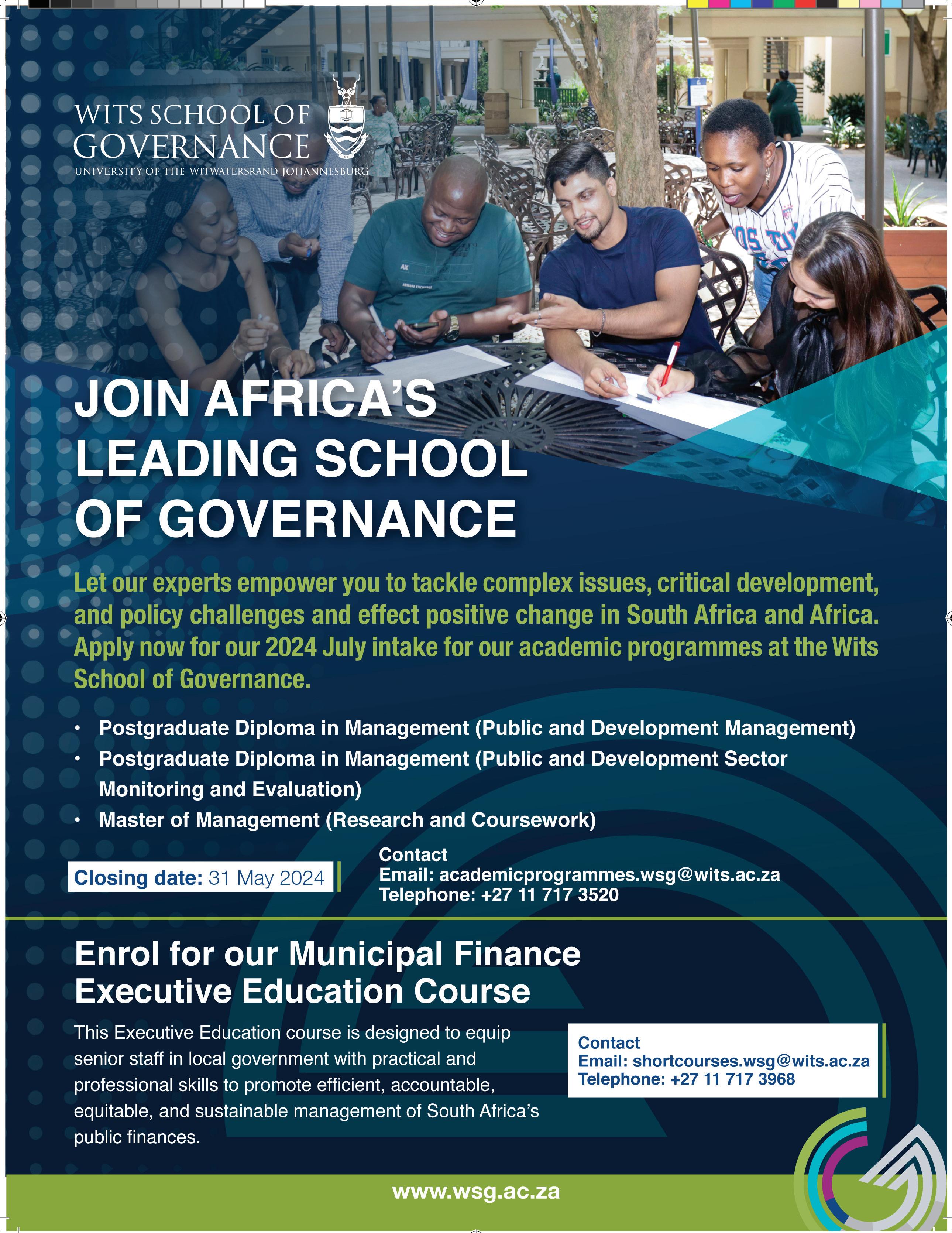

Municipal Finance
KEMANTHA GOVENDER, Communications Manager, Wits School of Governance, invites local government employees to learn about Municipal Finance Management.
Thorough financial management practices are crucial to the long-term sustainability of municipalities. The Wits School of Governance offers the Municipal Finance Management Executive Course to equip senior staff in local government with practical and professional skills to promote efficient, accountable, equitable and sustainable management of South Africa’s public finances.
Nembra Maluleke, a Municipal Finance Management graduate, works as a prepaid metering manager at Johannesburg Water. She completed the Municipal Finance Management course at the Wits School of Governance in 2023.
“As the Prepaid Section, our core responsibility is to collect revenue through prepaid meter connections. The job entails daily management and administration of staff according to organisational policies.
“We must ensure that customers with prepaid meters can access water via vending points. I have been in this role for a year now and love the opportunity of adding to the objectives of the City of Johannesburg, which is to collect revenue and provide quality water to the city’s residents,” Maluleke says.
She explains that South Africans need more knowledge on prepaid water and its benefits. Similarly to prepaid electricity,
consumers purchase water credit in the form of prepaid water tokens. “When entered into the user interface unit (located in the consumer’s home), the token instructs the water management device to allow a certain amount of water through the meter before closing. Consumers can track usage, load credit remotely and decrease the possibility of bill shock due to leakages or incorrect monitoring.”
She says she did this course at Wits because as a leader in the municipal entity, it is vital to be equipped with the right knowledge about all the acts and policies governing the municipality to be able to provide service to the people of the City of Johannesburg.
Maluleke adds that studying helps one develop critical skills, including decision-making, mental agility, problem-solving and logical thinking.
“Education contributes to greater productivity and creativity. I have learnt to apply a strategic level of financial management and allocation of resources to meet the service delivery needs of our citizens. As employees of the City of Johannesburg, we need to align whatever we do in our everyday duties with the city’s strategic goals and objectives.”
WHAT YOU WILL LEARN FROM OUR COURSE
The Municipal Finance Management course will teach you how to:
• Apply a comprehensive knowledge of government policy framework regarding service delivery;
• Implement financial controls and manage risk within the local government context, as well as manage all aspects of the municipal budgeting system, including implementation;
• Describe the responsibilities expected of municipal officials in positions of authority, particularly with respect to decisions with financial implications;
• Manage stakeholder relations effectively and explain the strategic planning process and align implementation policy and performance management procedure with overall local and national government strategy;
• Apply the key principles of supply chain management (SCM) and link the import SCM regulations to the delivery of municipal services;
• Prepare regular reports on financial position, financial performance and cash flow statements;
• Manage a municipality’s assets and liabilities through an application of internal controls required to manage fraud that may arise in receipt and use of municipal assets;
• Explain the importance of having IT controls, a risk-based plan and a rescue plan; and
• Apply the principles of project management to run successful projects within a specific time.


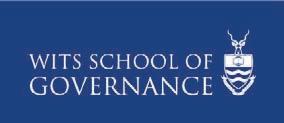
IMAGE: SUPPLIED
W I TS SCHOOL O F GOVERNANC E For more information: www.wsg.ac.za ISSUE 44 VOICE OF LOCAL GOVERNMENT 9 ADVERTORIAL | WITS SCHOOL OF GOVERNANCE
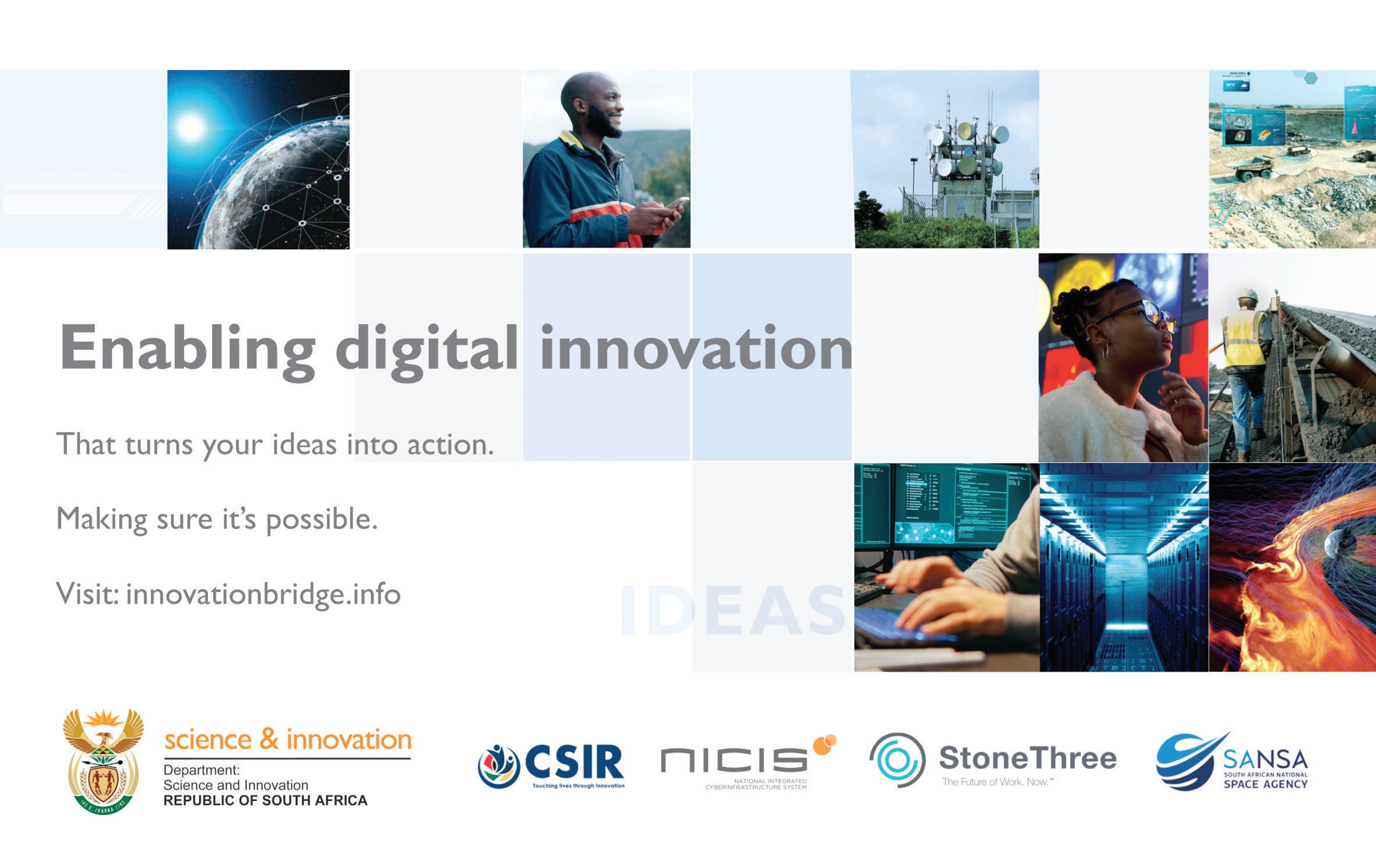

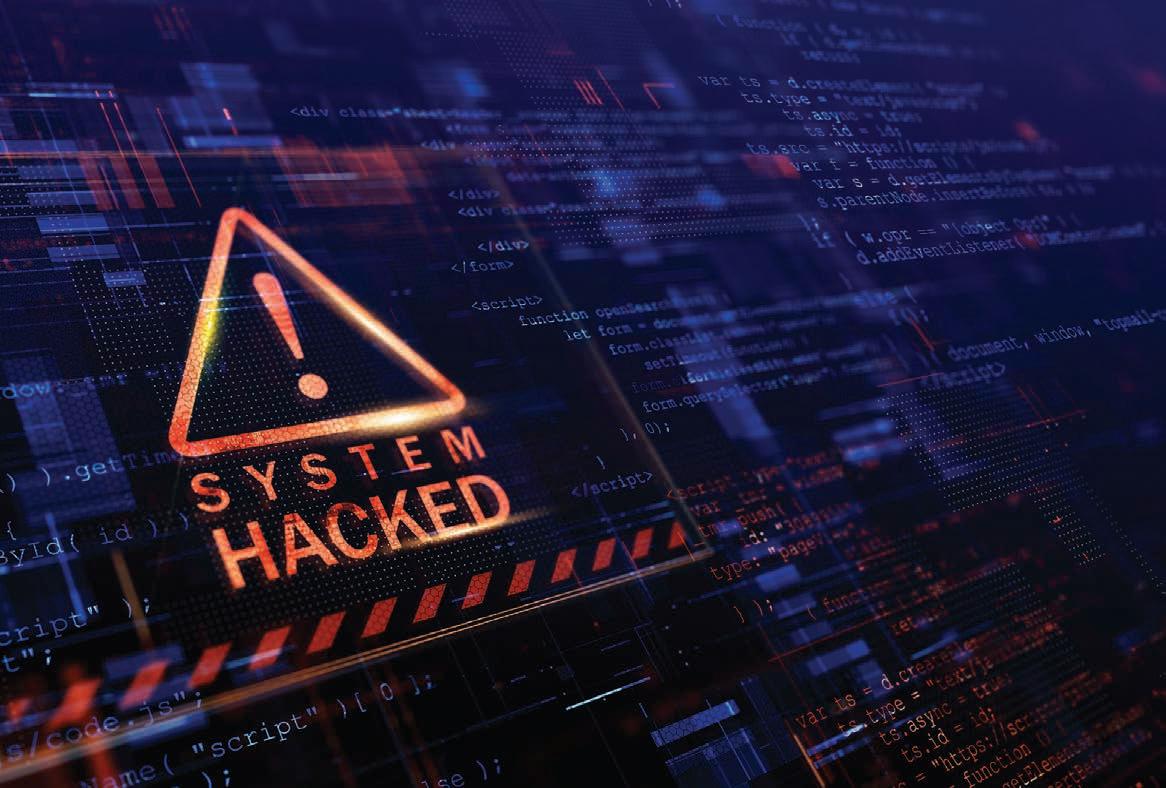


THE CHALLENGE OF IRRIGATED AGRICULTURE
More than 50 per cent of the country’s water is allocated towards agriculture in the different provinces. Becoming more sustainable is vital, particularly with the increasing threat of climate change.
Dr Harrison Pienaar, who works in the Water Research Centre at the CSIR, says they have been researching water usage in agriculture since 2012. He says the agriculture sector must start planning now before water scarcity worsens. “We need to use that water cautiously and sparingly. Long-term planning is critical for the agricultural sector.”
One of the ways the CSIR is helping farmers conserve water is through a water-use smartphone app. Dr Pienaar says this is to help orchid fruit farmers improve their irrigation techniques. “We developed this app to make sure farmers can predict near-real-time water requirements of fruit tree orchards in particular. An important part of the research and data collection was building trust with the farmers.
“As a research organisation, we’ve had immense support from farmers because they enjoy the research we undertake.” Dr Pienaar adds that collaboration between public and private entities is vital in water-saving efforts.

IMAGES: SUPPLIED
ISSUE 44 VOICEOF LOCAL GOVERNMENT 11
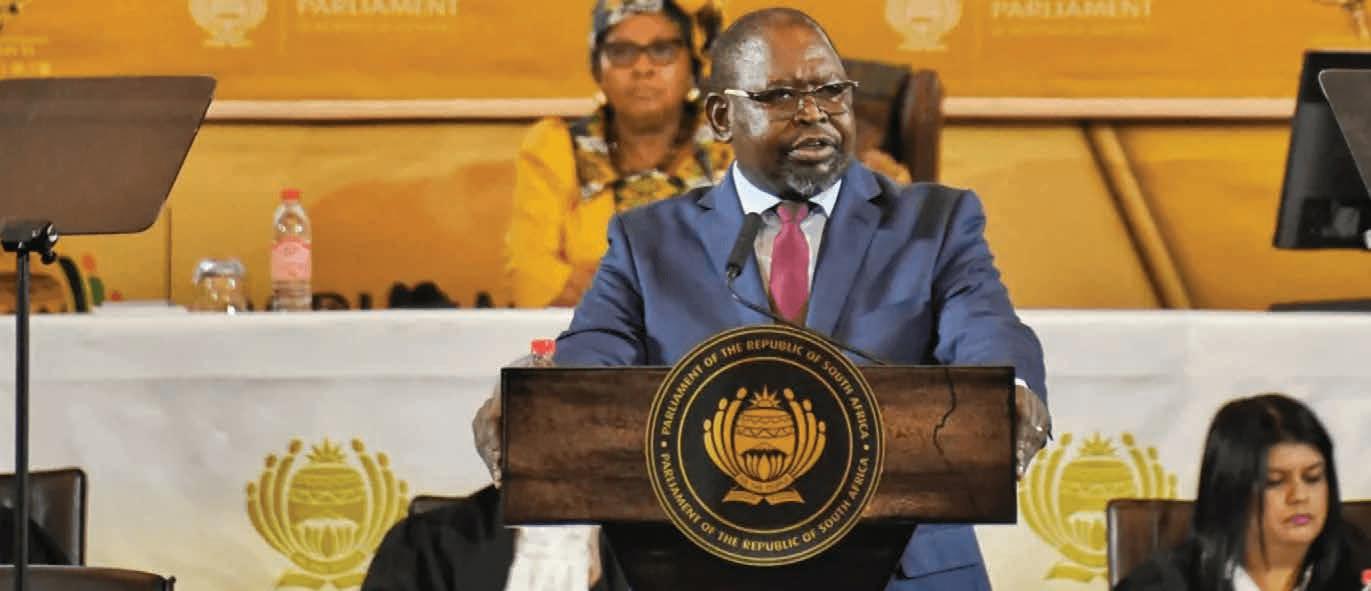
Reviewing local government funding
MATTHEW HIRSCH unpacks the realities faced by municipalities around budgets and looks at the challenges, and our experts proffer how municipalities should be managing their finances
When it comes to the budget, the spotlight is usually on tax or state-owned enterprises (SOEs). But the budget speech is also when provinces and municipalities find out how much money they’ll be getting for the financial year.
Local government’s role in delivering services is crucial – it is responsible for roads, electricity, water, refuse collection and infrastructure, among other things. Many municipalities are struggling due to budget constraints and a lull in revenue collection from households.
In his recent budget speech before parliament, Finance Minister Enoch Godongwana set aside R2.8-trillion, or 51.1 per cent, of total noninterest expenditure allocated to provinces and municipalities over the next three years.
R531.7-billion is being allocated to local governments and R2.3-trillion is going to provinces.
An additional R105.50-billion rand will be allocated to provinces over the next three years to cover the cost of
implementing the 2023 public-service wage agreement, mainly in the education and health sectors.
“The provision of these additional funds will cushion the wage bill pressures faced by these critical, personnel-intensive departments while freeing up resources for capital investment and goods and services,” the minister said.
“Municipalities are the coalface of service delivery. Sadly, an unacceptable number of them are experiencing weaknesses in governance, financial management and service delivery.
“To address these challenges and transform municipalities into engines of growth, we have adopted a multipronged approach.” This approach, said Godongwana, focuses on tightening budget processes, ramping up oversight, increasing the skills and capacity of municipal employees and driving investment in maintaining and building infrastructure.
A REIMAGINED MUNICIPALITY
Dr Ivor Chipkin, co-founder and director of the New South Institute (NSI), says
“National Treasury is very nervous about funding local governments, but poor local governments desperately need that funding to discharge their mandates.” – Dr Ivor Chipkin
it is perhaps time to rethink the way municipalities work.
“Essentially, municipalities are charged with managing the infrastructure of day-to-day life; that’s why they are so fundamental. It’s also why there was so much hope in the ’80s and early ’90s that if one effectively transformed and democratised municipalities, it could make a huge difference to ordinary people’s lives, especially poor people dependent on state and municipal services.
“Provinces get the lion’s share of the funding. There’s been a long, ongoing complaint from municipalities that that’s not fair,” says Dr Chipkin.
However, he says National Treasury has been reluctant to put money into local governments because “it tends to disappear”.
“Local government capacity is poor, and there’s a lot of corruption in local government. You have this catch-22 situation, and National Treasury is very nervous about funding local governments, but poor local governments desperately need that funding to discharge their mandates.”
Dr Chipkin adds that in the post-apartheid environment, there was a fundamental restructuring in the way local government works with the introduction of the idea of wall-to-wall municipalities. “Wall-to-wall municipalities means there are municipalities in every single part of the entire country. Historically, municipalities only existed in towns and cities. Usually, it referred to a
12 VOICE OF LOCALGOVERNMENT ISSUE 44
Finance Minister Enoch Godongwana delivers the 2024 Budget Speech in Cape Town on 21 February 2024.
town or city with a viable local economy. Rural areas were administered through provincial governments.
“Many of the municipalities are structurally bankrupt. It doesn’t matter how well run they are, it doesn’t matter how honest the officials are or their integrity. They cannot discharge the services because there just isn’t enough of a local economy to generate the revenue to provide services.”
Dr Chipkin says that this means municipalities are structurally dependent on grants from provincial and national government. “These grants are usually insufficient,” he adds.
He explains that while there are places where these grants are well managed, such as the Western Cape, the rest of the country paints a much more uneven picture. He emphasised the need for a conversation about whether having wall-to-wall municipalities was the right approach. One of the options, he says, could be for some municipalities to transfer some of their responsibilities to the provinces.



“The current configuration of local government gives no representation to metros; I think that’s crazy. The metros are regarded simply as just another local government. We need a more differentiated system of local government where metros get their own representation in the intergovernmental relations,” Dr Chipkin states.




“Inadequate funding of local government undermines the notion of developmental local government and therefore SALGA reiterates its calls for a review of the Local Government Fiscal Framework.” – Lesetja Dikgale
growing particularly quickly. That puts huge constraints on the revenue base of the municipality to discharge services.
“Some areas are growing, especially among the poorest of the poor. The type of infrastructure demands that places on municipalities are very particular. Those municipalities are usually not able to fund that type of infrastructure from their revenue. There’s always this great tension between economic infrastructure and social infrastructure. These are really hard balances to get right, especially when you have weak administrations.”
“The impact of this demographic concentration on local government cannot be overstated. With such a large portion of the population residing in urban centres, municipalities face unique challenges in providing essential services, infrastructure and resources to meet the needs of their residents,” SALGA explains.

Dr Chipkin stresses that transparency is urgently needed on what and where municipalities are spending their budget. He says municipalities are outsourcing many of their core services to private companies.



“The strain on infrastructure, housing, transportation, healthcare, and education systems in these urban centres is evident, requiring innovative solutions and strategic planning from local governments to ensure sustainable development and equitable access to services for all residents,” the organisation says.
SALGA says that the revenue-sharing mechanism, specifically the Local Government Equitable Share Grant (LGES), is “insufficient and hinders the sector’s ability to carry out its constitutional obligations, including providing basic services to indigent households”.







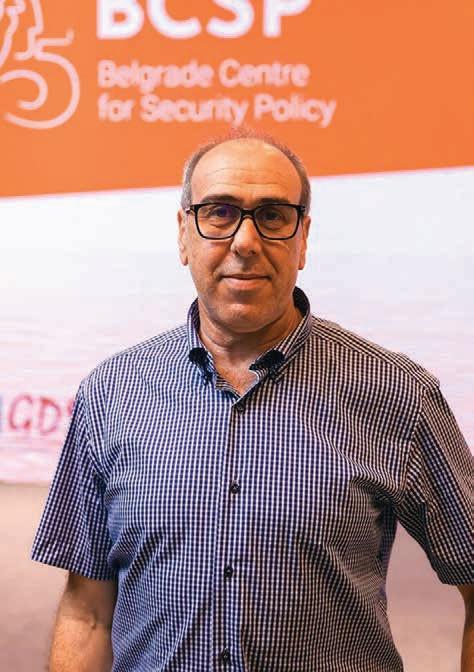
“Unfortunately, I don’t think there are any quick fixes. I think some of the problems in local government are systemic. They are there by design in the current system, and we need to rethink that design.”
POPULATION GROWTH OF MUNICIPALITIES A FACTOR
Another constraint on municipalities, Dr Chipkin says, is population growth. “There’s been a huge migration of people from across the country. I’m sure these are poor, unemployed people, and I’m sure the local economy is not


managing those contracts and a
“We need to know much more about who those companies are, what’s being done to hold them to account, who is managing those contracts and relationships. In many of our municipalities, we’ve completely lost control. Take Joburg’s potholes as an example; a company has either abandoned the site or left it unfinished. There is no one checking to see if the work has been completed satisfactorily.”
SUPPORTING MUNICIPALITIES IS CRUCIAL
SALGA says one of the standout revelations of the 2022 Census was the population concentration around the urban centres. In a statement before President Cyril Ramaphosa’s State of the Nation address, SALGA called for more support for municipalities.
“In the context of declining property rates and tariff revenues and increasing expenditure on bulk service costs, local government is operating in an unsteady environment and requires more financial support if it is to address the social and economic challenges people are facing.”
MANAGING MUNICIPAL DEBT
SALGA warns that there has been a significant increase in debt in municipalities, which increased to R305.8-billion by the end of December. This was up by 17 per cent compared to the previous year’s R261.5-billion. SALGA says this trend is concerning and needs urgent attention.
“Although there has been some remarkable progress, there is still more to be done to address the policy gaps, budgetary constraints and backlogs in infrastructure that make it challenging for the sector to meet the increasing needs of communities across the nation.
IMAGES: SUPPLIED, JAIRUS MMUTLE / GCIS
ISSUE 44 VOICE OF LOCAL GOVERNMENT 13 MUNICIPAL FINANCE
Dr Ivor Chipkin
BREAKDOWN FOR PROVINCES
According to its budget review, Treasury’s allocation to provinces and municipalities will differ slightly compared to last year “due to a combination of these consolidation measures and the impact of the 2023 public-service wage agreement. While equitable share transfers to provinces are higher compared to the previous budget, conditional grant funds remain limited. Transfers to municipalities are also reduced”.
Treasury explains: “Provinces and municipalities need to prioritise their resources to ensure critical services are not negatively affected. Through strategic planning, structural reforms and robust financial management, they can continue to deliver the necessary services to their communities.
“Provinces and municipalities face significant spending and revenue pressures from the rising costs of basic and social services, as well as declining economic growth and high borrowing costs,” adds Treasury.
Treasury says the conditional grant review process has identified various reforms to be considered in the 2025 budget process, with phased implementation.
“Municipalities serve as the frontline providers of services to people, communities, businesses and the government. Refuse collection, sanitation, electricity and water delivery have all advanced since 1994. Current statistics show that 89 per cent of households in South Africa have access to water, and 85 per cent have access to electricity,” the organisation says.
MUNICIPALITIES ARE OWED MORE THAN R300-BILLION
National Treasury says it believes local government is getting a fair chunk of the budget. “Local government is receiving a fair share of nationally raised revenues based on its ability to raise revenue through property taxes and service charges.”
Treasury adds that it believes many municipal finances aren’t being well managed. “The Auditor-General raised concerns about municipalities being poorly managed and in poor financial health, and that many municipalities’ future operations are challenged. The State of Local Government Financial Report subsequently identified 158 municipalities in financial distress.”
According to the latest figures, municipalities are owed R306.7-billion collectively.
“The National Treasury has focused its attention on supporting municipalities in ensuring budgets are funded (spending within the revenue envelope of the municipality),” Treasury explains.
LOCAL GOVERNMENT BUDGET ALLOCATION
While SALGA says it appreciates the R8.4-billion increase in allocations to local government, it says this allocation remains inadequate. It says that from the fiscus, only 9.7 per cent is allocated to local government compared to 42.4 per cent to provinces and 47 per cent to national government.
the notion of developmental local government and therefore SALGA reiterates its calls for a review of the Local Government Fiscal Framework. Inadequate municipal funding and limited budgets have a direct correlation to the prevailing challenges confronting many of South Africa’s municipalities, especially the small and remote municipalities.”
SALGA says it welcomes the additional allocation of R1.4-billion to the Municipal Disaster Grant. “This will assist municipalities with repairs and maintenance of the damaged municipal roads and infrastructure caused by floods and other disasters. The introduction of the smart meter grant of over R2-billion in the medium term to support municipalities approved for the Eskom Debt Relief is a positive development and will go a long way to improving revenue collection.”
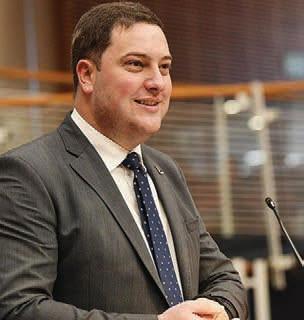
“Currently, municipalities can cover 60 per cent of their expenditures on their own (2018–2022 National Treasury financial data); this indicates a shortfall in the funding for local government to achieve its mandate to deliver services and the developmental objective,” reports SALGA.
In a post-budget-speech statement, SALGA said one cannot overlook the impending decrease of R3.258-billion in conditional grants (both direct and indirect) for the 2024/25 financial year. “While SALGA recognises the government’s efforts towards fiscal consolidation through spending controls, it firmly opposes these reductions in grants, foreseeing their detrimental impact on local government’s ability to deliver services, advance local economic development and attract investment. These cuts exacerbate the existing underfunding challenges faced by local government,” the statement read.
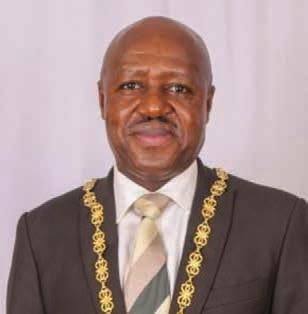
SALGA chairperson: municipal finance and fiscal policy working group
Lesetja Dikgale says: “Inadequate funding of local government undermines
HOW ARE MUNICIPALITIES FUNDED?
According to SALGA, funding for local government comes from nationally raised revenue and is allocated to all three spheres of government.
Responding to questions, SALGA says:
“This is allocated through a government gazette after extensive consultations with key government stakeholders and taking into account the government fiscal position, key national interests and the National Development Plan objectives as set out in the Medium Term Strategic Framework.
“The allocations to municipalities are based on the above as well on the backlogs in infrastructure, water and electricity access. The Equitable Share allocation is granted to those municipalities with a backlog to ensure they provide free basic services.”
The organisation said that funding for the municipalities is based on the Integrated Development Plan (IDP) and is given through direct grants.
“When municipalities underspend infrastructure grants due to a myriad of reasons, National Treasury gives municipalities a chance to justify their underspending and apply for a rollover (with certain conditions) so that the project can continue in the next financial year. National Treasury does not refuse to give money to municipalities; it refuses requests for rollovers if the municipality fails to meet the rollover conditions, and if it applies for a rollover on top of a previous rollover,” SALGA explains.
Geordin Hill-Lewis
IMAGES: SUPPLIED 14 VOICE OFLOCALGOVERNMENT I SSUE 44
Lesetja Dikgale
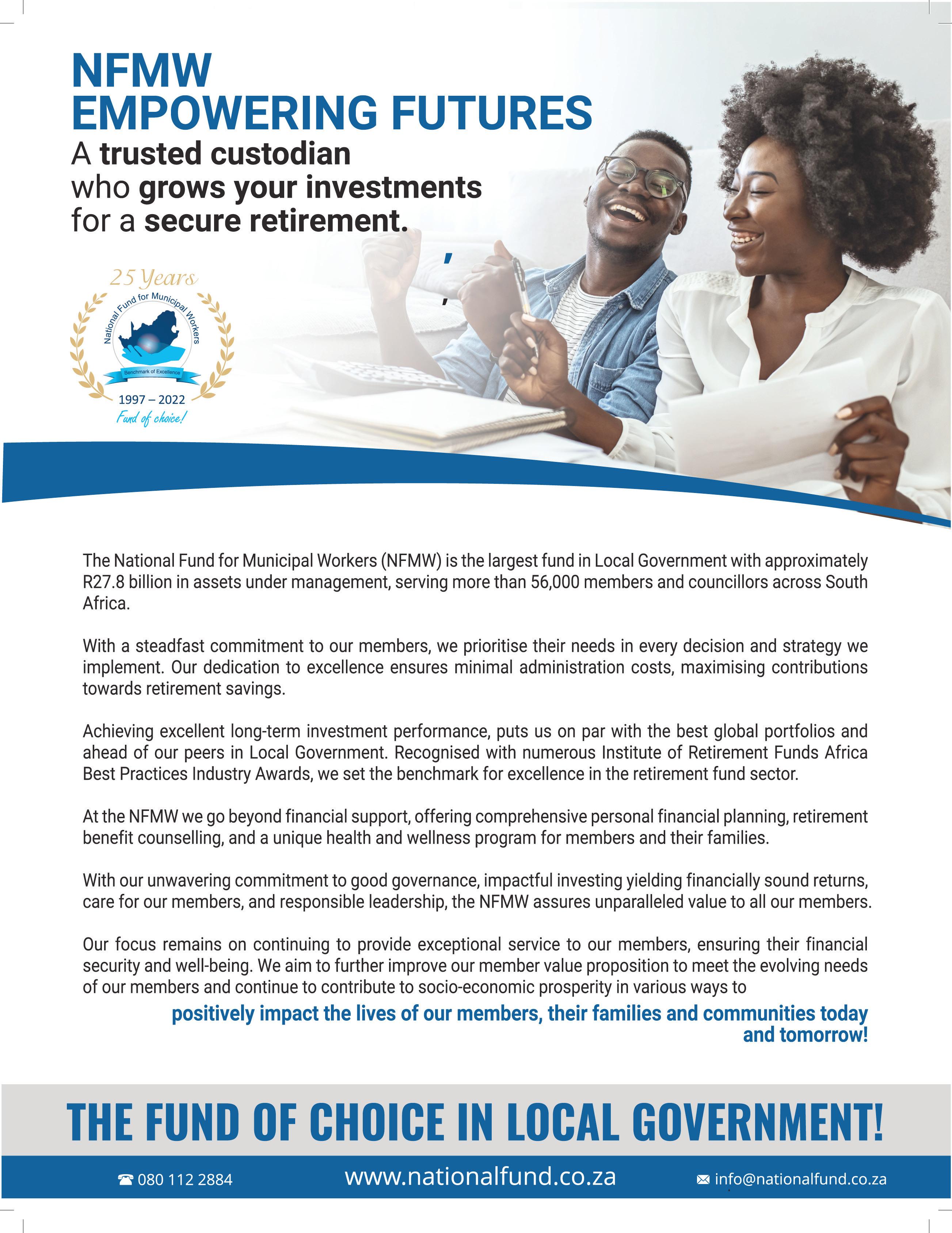
Municipal debt recovery
BUSANI MOYO unpacks the financial conundrum municipalities face as they carry out their mandate amid the debt owed by communities and citizens
South African local government municipalities, as the administrative level closest to the citizens, have an important role in providing services and ensuring government meets its objective of achieving a decent standard of living for all by eliminating poverty and reducing the inequality the country is famous for. However, evidence that these municipalities are struggling under the weight of consumers failing to pay for services is there for all to see, as roads with potholes, collapsing electricity infrastructure, and flowing raw sewage become the order of the day.
The municipal debt challenge is huge. In a media statement covering the period 1 July 2022 to 30 June 2023, National Treasury reports that at the time of publication, “the aggregate municipal consumer debt amounted to R313.2-billion”. The same media statement indicated that government departments owed municipalities R17.6-billion (6 per cent of the debt), while households remained the biggest contributor at R230.5-billion (7 per cent). This indicates that about 13 per cent of the debt is owed by businesses. National Treasury also reports
that debt to metropolitan municipalities amounted to R163.5-billion, with Johannesburg accounting for 27 per cent of the total, followed by Ekurhuleni at 20 per cent and eThekwini at 15 per cent.
Recent updated figures in March this year, looking at revenue owed to municipalities, aggregate municipal consumer debts jumped by over R30-billion over the quarter to R338.2-billion.
A MICROCOSM OF A BIGGER CHALLENGE
Tebogo Moraka, group chief fi nancial offi cer in the City of Johannesburg, is clear about the basis of the municipal debt challenge. Asked to identify the main reasons households owe municipalities, he says: “The City is not immune to the prevailing economic conditions plaguing the country.” Moraka notes that the debt challenge refl ects South Africa’s weak economic fundamentals. “We have seen economic growth continue to be constrained, growing at less than one per cent for the last few years, and escalated costs of living, such as infl ation and increasing interest rates, placing a further burden on households affected by job losses, resulting in an increase in
“The debt challenge reflects South Africa’s weak economic fundamentals. We have seen economic growth continue to be constrained, growing at less than one per cent for the last few years, and escalated costs of living.” – Tebogo Moraka


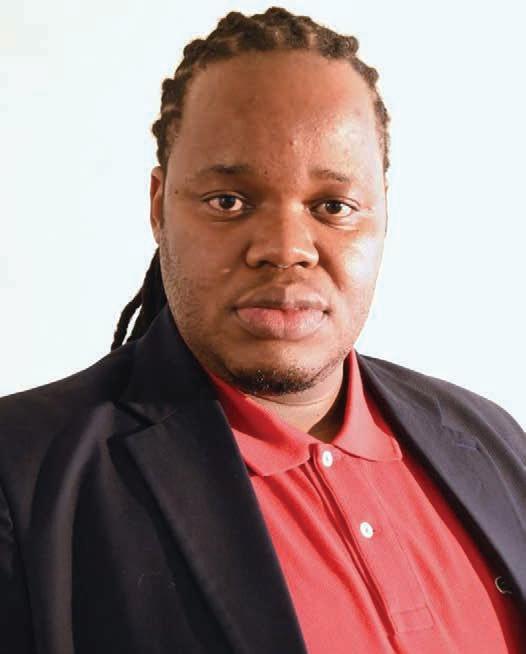

the unemployment rate and declining household incomes,” he explains.
While it’s true that South Africa’s struggling economy contributes substantially to the municipal debt challenge, Selby Bokaba, acting group head of communication and marketing events at the City of Tshwane, identifi es different categories of consumers, showing that some may refuse to pay even when they can afford to do so.
He says some indigent households cannot afford to pay, but still consume more than the free basic services offered by the city, creating debt. In contrast, others in that category have not bothered to register in the indigent registry to receive free basic services, but still consume and do not pay. He also identifies the households that face challenges and approach the city to make arrangements to pay. On the other hand, some consumers can afford to pay, but will only do so when disconnected or disconnection looms.
16 VOICE OF LOCAL GOVERNMENT ISSUE 44
Tebogo Moraka
“There are customers (possibly all of the above groups) who are being coerced into not paying their bills with the hope of a flat rate from the city,” adds Bokaba.
DO INEFFICIENCIES CONTRIBUTE TO RISING MUNICIPAL CONSUMER DEBT?
A recent article by nongovernmental organisation Helen Suzman Foundation identifies that inaccurate billing and poor credit control are major reasons for municipal debt. The same article notes that citizens sometimes refuse to pay as a form of protest against poor service delivery. This view indicates that while it is easy to point to the consumer as the source of the municipal debt challenge, inefficiencies within the local municipalities are a huge contributor. The much-reported Johannesburg billing crisis is a clear example.
From the perspective of the City of Johannesburg, Moraka acknowledges the role played by municipal structure inefficiencies in the escalating debt owed to municipalities. He believes “inefficient systems between engineers/ officials performing work on the ground, particularly for electricity and water, and the billing department also raises inefficiencies that have an impact on both billing and collection efforts”. Moraka adds: “A critical issue municipalities should pay more attention
THE INDIGENT REGISTRY
It’s accepted that some households within municipalities cannot afford to pay for basic services. Aware of this, the government introduced the indigent policy in 2001 to ensure that such households are registered in what is known as the Indigent Register.
To qualify for registration on the Indigent Register, a consumer should:
• earn a specific monthly amount: below R3 200 in some municipalities and R1 600 in others;
• live in the household they apply for unless they apply on behalf of a child-headed household;
• be above 18 unless appointed to executorship by a court of law;
• own the property where they stay or are a municipal tenant; and
• be a South African citizen. The eligibility criteria for inclusion in the Indigent Register differs from one local municipality to the other. Consumers should approach their respective municipalities to determine the eligibility criteria and documents they must present.

“Tshwane has a debt recovery programme that includes summons (legal processes through lawyers) and disconnections for nonpayment.” – Selby Bokaba
revenue value chain processes, such as meter reading, should be at the forefront of municipalities”.
“Critical issues, such as the immediate allocation of payments made by consumers to their accounts, also help in the revenue value chain and ensure that credit control inefficiencies are avoided.”
DOES LOCAL GOVERNMENT HAVE A DEBT RECOVERY PROGRAMME?
The basis of the municipal debt challenge is clear, but does the local government have a debt recovery plan? Bokaba says: “Tshwane has a debt recovery programme that includes summons (legal processes through lawyers) and disconnections for nonpayment.” He adds that while the “tender for debt collection has come to an end and a new one is in process, credit control is active and continuing”.
In Johannesburg, Moraka says the city is guided by Section 96(a) of the Local Government: Municipal Systems Act No 32 of 2000, which obliges the city to collect all money due and payable to it. He adds that “Section 96(b) of the same act requires the city to adopt, maintain and implement a credit control and debt collection policy that is consistent with its rates and tariff policies and complies with the provisions of the act.”
To recover debt from consumers, Moraka identifi es some revenue enhancement strategies, including the application of MFMA Section 118, which states that a Registrar of Deeds may not register the transfer of immovable property without the production of a rates clearance certifi cate confi rming all amounts due to the municipality pertaining to that property, are paid.
to is the queries raised on the bills given to consumers, as, in most cases, when a bill is queried, the consumer will ordinarily not pay until resolved.” Moraka believes that municipalities can do a lot to improve their structures to ensure effi ciency in revenue collection. For example, he suggests that “digitising key
Moraka also refers to using Level 3 connections, which means that should illegal consumption continue after the initial disconnection, the customer’s account is referred to a special credit control process for “remove installation permanently” (RIP) action, with recommendations that the supply installations be permanently removed”. Where a Level 3 disconnection is made and the customer later pays their account or makes arrangements to pay, they must apply for a new service connection.
IMAGES: SUPPLIED
ISSUE 44 VOICE OF LOCAL GOVERNMENT 17 MUNICIPAL FINANCE
Selby Bokaba
Are our municipalities financially viable?
A local government municipality can only adequately meet its role of providing sustainable and inclusive infrastructure and services if it is financially viable. Many who have been to South African cities, towns and rural communities, from Musina in Limpopo to Cape Town in the Western Cape, will attest that South African municipalities are struggling financially, writes BUSANI MOYO

There is much evidence to support this observation, whether you look at the sprawling squatter settlements adjacent to the country’s freeways or the piles of garbage on street corners in cities such as Johannesburg. This leaves many observers asking if South African local government municipalities are financially viable.
The answer can be obtained from the numbers from South Africa’s most credible institutions, such as National Treasury, Statistics South Africa (Stats SA), and the Auditor-General. According to a recent article by Stats SA, “while some municipalities generate a fair amount of their own income, many municipalities –especially those that are predominantly rural – are almost totally dependent on funding transfers from national government”.
When South Africa’s Auditor-General, Tsakani Maluleke, met the Parliamentary Standing Committee on Auditor-General
MISSING THE BASIS OF FINANCIAL VIABILITY
A financially viable municipality can provide services efficiently and effectively. For local government municipalities to be financially viable, they must get the basics of financial sustainability right to attain autonomy by efficiently collecting local resources. For this to be possible, there should be a strategic focus on effective financial management based on transparency and accountability. Supporting this view, Stats SA proposes that “the ability of a municipality to generate its own income is an important sign of its independence”.
in May 2023 to present a briefing on the audit outcomes for 2021/2022, the committee members heard “that of the 257 audited municipalities, only 38 (15 per cent) had received clean audits, and 21 of those were in the Western Cape”. Moreover, “6 municipalities (2 per cent) had received adverse audits, 15 municipalities (6 per cent) had received disclaimers, and 16 audits (7 per cent) remained outstanding”.
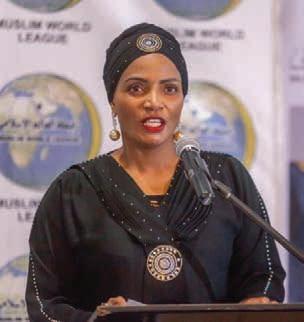
Feroza Suleman, executive director at the Build Environment Support Group (BESG), says the challenge with financial viability in municipalities starts from the failure to meet the basics. BESG describes its mandate as involving working “in solidarity with communities to navigate a complex context by supporting vulnerable sectors of our society in accessing and developing land, basic services, shelter and livelihood security through the provision of capacity building, social and technical support and promoting citizen engagement with private and public sectors, in meeting their needs”. Suleman speaks specifically about KwaZulu-Natal. “The financial independence of municipalities in KwaZulu-Natal remains a complex issue, exacerbated by a lack of accountability in many local government structures.” She adds that the lack of accountability makes it more challenging for municipalities to generate sufficient income and effectively manage their finances. This situation leads to municipalities relying “heavily on financial support from the national fiscus, leaving them vulnerable to external influences and unable to exercise full control over their financial affairs”.
“The local government sector is weak in governance and financial management.”
– Halima Kunoethe
In a recent presentation to the SALGA Research Colloquium, Halima Kunoethe, chief director of the capacity building unit at the KwaZulu-Natal Department of Cooperative Governance and Traditional Affairs, agrees with Suleman. She says: “The local government sector is weak in governance and financial management.” Kunoethe believes that
18 VOICE OFLOCALGOVERNMENT I SS UE 44
Halima Kunoethe

these weaknesses can be attributed to capacity issues. The SALGA Research Colloquium is a partnership between SALGA and the University of Western Cape’s Dullah Omar Institute, seeking to create a platform where policymakers, academia, municipality practitioners and key stakeholders in local government can deliberate on issues facing municipalities.
Kunoethe identifies the basic challenges leading to municipalities’ lack of financial viability. Like Suleman, she points to institutional and financial incapacity as undermining the financial viability of municipalities. She also alludes to a lack of appropriately skilled personnel and inadequate public participation, leading to corruption and low levels of community trust.
Kunoethe and Suleman’s views are supported by evidence presented by Maluleke to parliament. According to the committee’s report, “concerns flagged by the Auditor-General included the inefficient use of external consultants, insufficient investment in infrastructure management and maintenance, including for water-treatment facilities, widespread financial distress and poor financial planning”. It adds: “88 per cent of municipalities lacked effective compliance controls, and 44 per cent had unfunded budgets.”
THE CHALLENGE OF LOW BUDGETS FROM THE NATIONAL FISCUS
In South Africa, where the national government provides funding to an estimated 28 million people on social grants against 7 million taxpayers, low budgets from the national fiscus are inevitable.
Suleman notes: “The impact of low budgets from the national fiscus often leads to a lack of resources, inadequate staffing levels and limited investment in critical basic infrastructure, which undermines the sustainability and long-term viability of local government municipal structures. Insufficient funding severely constrains the ability of municipalities to carry out their mandated responsibilities effectively.”
THE DISTRICT DEVELOPMENT MODEL
President Cyril Ramaphosa announced the establishment of the District Development Model (DDM) in 2019. A pilot project was implemented in Waterberg, OR Tambo District Municipality and eThekwini Metropolitan Municipality. The model was established to ensure that the state is more coherent in facilitating inclusive economic growth, reliable delivery of services, changing the structure and organisation of communities and strategically investing in infrastructure.
A report published in February 2023 by the Department of Science and Innovation in collaboration with the Human Science Research Council outlines some of the achievements of the DDM, including:
• providing a platform for stakeholder engagement in service delivery;
• improving stability and co-ordination, which attracted international funders;
• boosting citizen engagement;
• paving the way for several imbizos to discuss the implementation of the model; and
• inculcating active citizenship, which made communities more confident in their local government.
In his 2024 State of the Nation Address, President Ramaphosa indicated that the DDM will be rolled out nationwide to help “municipalities to better plan, budget and implement projects and programmes. It will also ensure that the work of municipalities is managed and monitored to keep it on track”
IS THE LOCAL GOVERNMENT EQUITABLE SHARE GRANT THE SOLUTION?
According to the Department of Cooperative Governance and Traditional Affairs, the South African government seeks to use the Local Government Equitable Share (LGES) grant to ensure that essential services, such as water, energy, sanitation and refuse removal, are provided to all communities, even those with many low-income households. The department further explains that the LGES grant seeks to ensure “the most vulnerable communities have access to these vital services without financial strain”.
Asked whether she thought the LGES grant could be the solution to financial viability in local government, Feroza Suleman of the Build Environment Support Group, says: “Despite the intention to provide financial support to local governments, the grant falls short in meeting the growing demands and challenges faced by municipalities. The costs of delivering essential services have been increasing steadily, while the grant allocation has not kept pace.”
BACK TO THE BASICS
From the views above, it is clear that while the South African government has provided funding to keep municipalities functioning, the answer to sustainability lies in going back to the basics. Municipalities need to be transparent and accountable. To achieve this, skills development and monitoring will play a huge part in ensuring capacity building.
The DDM’s achievements
RE AD


Want to know how well your municipality spends your money?
RE AD


 Feroza Suleman
Feroza Suleman
IMAGES: SUPPLIED ISSUE 44 VOICE OF LOCAL GOVERNMENT 19 MUNICIPAL FINANCE
Engaged, active and responsible

In South Africa, a country rich in cultural diversity and historical significance, the importance of active participation in local, provincial and national governance holds particular significance.
Beyond being a privilege, it is a fundamental responsibility that each South African citizen holds towards their community and nation.
Two active citizens in their respective fields of work share the importance of South African citizens participating actively in public affairs and highlight the benefits it brings to individuals and society at large.
COMMUNITY PARTICIPATION
Michael Chauke, specialist in inclusive governance and councillor welfare at the South African Local Government Association (SALGA), says: “Citizens must use all avenues open to them
to question even the highest public office bearers’ effectiveness to deliver services and other promises. In a nation where local governance plays a crucial role in service delivery and community development, the engagement of citizens becomes extremely important.
“At the local level, mechanisms, such as council meetings and collaboration with civic society, provide platforms for citizens to voice their opinion and to know what is happening in and around their communities.”
Ward councillors are always the first point of contact to facilitate communication between communities and authorities when issues arise. However, Chauke says other avenues are available to citizens to voice their concerns and make recommendations to local and national government.
“Ward committees hold important meetings to address community issues.
Suggestion boxes at various municipalities are available for those who prefer not to speak out publicly. Such platforms and information are essential for those in government leadership positions to respond promptly and transparently to citizen queries, fostering accountability and trust,” he explains.
ACCOUNTABILITY ON BOTH ENDS
Commenting on community protest, Chauke cautions that while protests might seem like a direct expression of discontent, targeting complaints solely at municipal or local government can lead to fragmentation.
“Citizens should work in cohesion with local representatives to escalate issues, even right up to the highest office in the land, and demand quicker replies. Furthermore, citizens should also become accountable for how they address community challenges.
Active citizenship stands at the core of any thriving democracy where citizens actively engage in the decision-making processes that shape their communities and nation. By ITUMELENG MOGAKI
20 VOICE OF LOCAL GOVERNMENT I SSUE 44
“Chapter 9 institutions are there for a reason – to serve as guardians of democracy, holding the government accountable and safeguarding citizens’ rights,” Chauke says.
BAD PAYERS

Chauke notes that the issue of nonpayment of municipal services poses a significant challenge to local governance and service delivery.
Citizens who refuse to pay but want to use government services are creating an even bigger problem. He illustrates how this issue affects the entire service delivery value chain, emphasising that municipalities rely on revenue from citizens for essential services.
“The Asisho! Let’s Say It! National Campaign, initiated and launched by SALGA in 2022, aims to educate communities about their civic obligations and deepen the understanding of mutual responsibilities between municipalities and citizens. Through dialogue and education, SALGA encourages municipalities to engage with citizens in finding sustainable solutions,” explains Chauke.
TECHNOLOGY FOR IMPROVED SERVICE DELIVERY
Technology plays a crucial role in promoting citizen engagement, notes Chauke. Social media platforms, community radios and access to smartphone devices are effective tools for disseminating information and encouraging active participation. However, he emphasises that technology should complement traditional forms of communication to ensure inclusivity.
NATIONAL ELECTIONS
In the context of elections, Chauke stresses the importance of voting as a fundamental democratic right. Despite challenges, such
as high unemployment rates, citizens must recognise the significance of their vote in shaping the future of the nation, from local to national level.
Active citizenship is indispensable for fostering inclusive governance and sustainable development in South Africa. By engaging in local mechanisms, holding authorities accountable and participating in democratic processes, citizens can contribute to building resilient communities and shaping a brighter future for the nation. “Our democracy will only thrive when people vote. It is your right, and it is important that you exercise that right when you become eligible to vote,” Chauke concludes.
YOUTH PARTICIPATION
Carl Steenekamp, known to be the youngest councillor in the country, representing Ward 17, also serving as the DA Chief Whip at the Merafong City Local Municipality, says many young people are disillusioned, primarily stemming from soaring unemployment rates.
“Over 70 per cent of the country’s youth are unemployed or not economically active, and many are still uneducated to a satisfactory level. And, plenty more are joining the long queue of joblessness,” explains Steenekamp.
“Despite the daunting challenges facing the youth, I have observed a growing interest by the youth in my ward to participate actively in public affairs,” he says. “I have, however, noticed that a significant portion of young people remain disenchanted with the current socioeconomic landscape, questioning the value of voting or actively engaging in matters affecting their communities and the nation as a whole.”
Steenekamp criticises the disconnect between the older generation
“Our democracy will only thrive when people vote. It is your right, and it is important that you exercise that right when you become eligible to vote.” – Michael Chauke
in leadership positions and the realities experienced by the youth, who constitute the majority of South Africa’s population. He emphasises the urgency for proactive engagement, stressing that waiting for government intervention may prove futile, considering historical delays in addressing pressing issues.
Steenekamp advocates for collaborative efforts within communities to address their challenges, emphasising the importance of taking initiative rather than solely relying on government intervention. He adds that government needs to demonstrate genuine concern by not only listening to the grievances of the youth, but also implementing solutions to address these.
ROLLING UP SLEEVES
Steenekamp highlights one initiative aimed at grassroots engagement. “We had an extensive fundraising drive in my ward to mitigate issues, such as cable theft, a prevalent problem impacting essential service delivery.”
Steenekamp adds that using technology to communicate or address community challenges has its limitations. Some rural and remote regions have limited access to sophisticated devices, but nonetheless, he advocates for the adoption of technological solutions where feasible to enhance service delivery.
Commenting on holding public officials accountable, Steenekamp says that at this juncture, there’s no other way, but to head to the polls and vote for change.
“The quickest and easiest solution to rectify what is happening in this country is for young and old to go to the ballot box on 29 May 2024 and cast their vote for change at both provincial and national levels.

“The complex socioeconomic challenges facing South Africa, particularly its youth, are huge and never-ending. I want to highlight the importance of community engagement, government responsiveness and active participation in the democratic process to address these issues and pave the way for a brighter future,” he says in conclusion.
IMAGES: SUPPLIED
Michael Chauke
I SSUE 44 VOICE OFLOCALGOVERNMENT 21 ACTIVE CITIZENRY
Carl Steenekamp
The power of your vote
PARMI NATESAN, CEO of the Institute of Directors South Africa, shares why ordinary South Africans should act as shareholders in the governance of South Africa Inc.
With President Cyril Ramaphosa declaring 29 May 2024 as the date for the 2024 General National and Provincial elections, it is imperative to recognise the profound signifi cance of every South African’s vote.
In the corporate world, shareholders play a pivotal role in shaping a company’s destiny. Through their investment, they have an interest in the company, which they need to protect by assuming an active role. Their power to appoint the board of directors refl ects a fundamental principle: the right to choose ethical and effective leaders who will act in the company’s best interests. In the same vein, in the context of a national election, South African voters can loosely be equated to the “shareholders” of their nation, with the power to vote in a “board of directors” (parliament), which ultimately results in the appointment of a CEO (president) and their executive team (ministers). This analogy underscores the importance of every citizen’s vote in shaping the destiny of our country.
THE BOARD OF DIRECTORS – PARLIAMENT’S CRUCIAL ROLE
Parliament, serving as the board of directors of South Africa Inc., holds a pivotal position in the governance of the nation. Much like a corporate board, it should craft policies, pass legislation and oversee the performance of the CEO and executive team.
The buck stops with parliament when it comes to the performance of the country. Members of parliament, as stewards of the nation’s interests, must deliver on their commitments. By holding parliament accountable for the country’s performance, voters reinforce the idea that parliamentarians must actively work towards the betterment of the nation and that their actions directly impact the wellbeing of the citizens.
THE CEO – THE PRESIDENT’S LEADERSHIP MANDATE
The president, analogous to the CEO of South Africa Inc., assumes the leadership role responsible for executing
the policies and decisions set by the board (parliament). The president should also play a pivotal role in setting the tone for ethical and effective leadership throughout government.
In addition, the president is entrusted with the responsibility of holding ministers accountable for their performance. Similar to a CEO managing an executive team, the president should evaluate the effectiveness of each minister, ensuring they align with the overall vision and objectives of the nation. If a minister falls short in delivering results or deviates from ethical standards, the president should take decisive action, including the removal of that minister if necessary. This accountability mechanism is essential for maintaining standards of performance.
THE EXECUTIVE TEAM – MINISTERIAL ROLES AND RESPONSIBILITIES
Ministers, resembling the executive team in a company, oversee specific portfolios critical to the nation’s wellbeing. Whether it’s healthcare, education or finance, ministers are tasked with formulating and implementing policies that directly impact citizens’ lives. This executive team must be composed of individuals with expertise, commitment and a genuine dedication to serving the public interest.
In the corporate world, executives are answerable for how money is spent within their departments, ensuring efficiency and prudent financial management. Similarly, ministers must be held accountable for the allocation and utilisation of public funds within their respective domains. This fiscal accountability is essential to ensure that taxpayer money is invested wisely, yielding tangible and equitable outcomes for the citizens.











Just as boards scrutinise a company’s fi nancial performance, parliament should assess ministers based on their ability to deliver results within budgetary constraints. Transparent reporting and accountability
South African voters can loosely be equated to the “shareholders” of their nation, with the power to vote in a “board of directors” (parliament), which ultimately results in the appointment of a CEO (president) and their executive team (ministers).

































22 VOICE OF LOCAL GOVERNMENT ISSUE 44
Parmi Natesan
mechanisms in government are vital to ensuring that the executive team operates responsibly, aligning their actions with the broader goals of the nation.
ACCOUNTABILITY – A CORNERSTONE OF EFFECTIVE GOVERNANCE
In both the corporate and governmental realms, accountability is paramount. The board (parliament), the CEO (president), and the executive team (ministers) must be held accountable for their actions and performance. Shareholders, or in this case, citizens, possess the power to demand transparency, ethical conduct and tangible results. When accountability mechanisms are robust, it ensures that leaders are responsive to the needs of the people and act in the best interests of the nation.
THE IMPORTANCE OF VOTER ENGAGEMENT
Statistics from previous elections reveal a concerning trend – a signifi cant number of eligible voters abstain from participating in the democratic process for various reasons,
including dissatisfaction with political options, protest of disapproval, lack of trust in the political system and apathy or indifference. Unfortunately, this lack of engagement undermines the very essence of democracy, as the power to appoint leaders lies with the citizens. By not exercising their right to vote, individuals neglect their responsibility as “shareholders” of the nation, diminishing their impact on the “board’s” composition and the selection of the “CEO” and “executive team”.
In the corporate world, responsible shareholders understand the impact of their votes on the company’s trajectory. Similarly, every South African citizen holds the key to the nation’s future in their hands during elections. By recognising their role as shareholders, citizens can ensure the appointment of ethical and effective leaders, contributing to the growth and prosperity of “South Africa Inc.”
Don’t waste the power of your vote – be an active shareholder in the governance of your country and drive the positive change you wish to see.
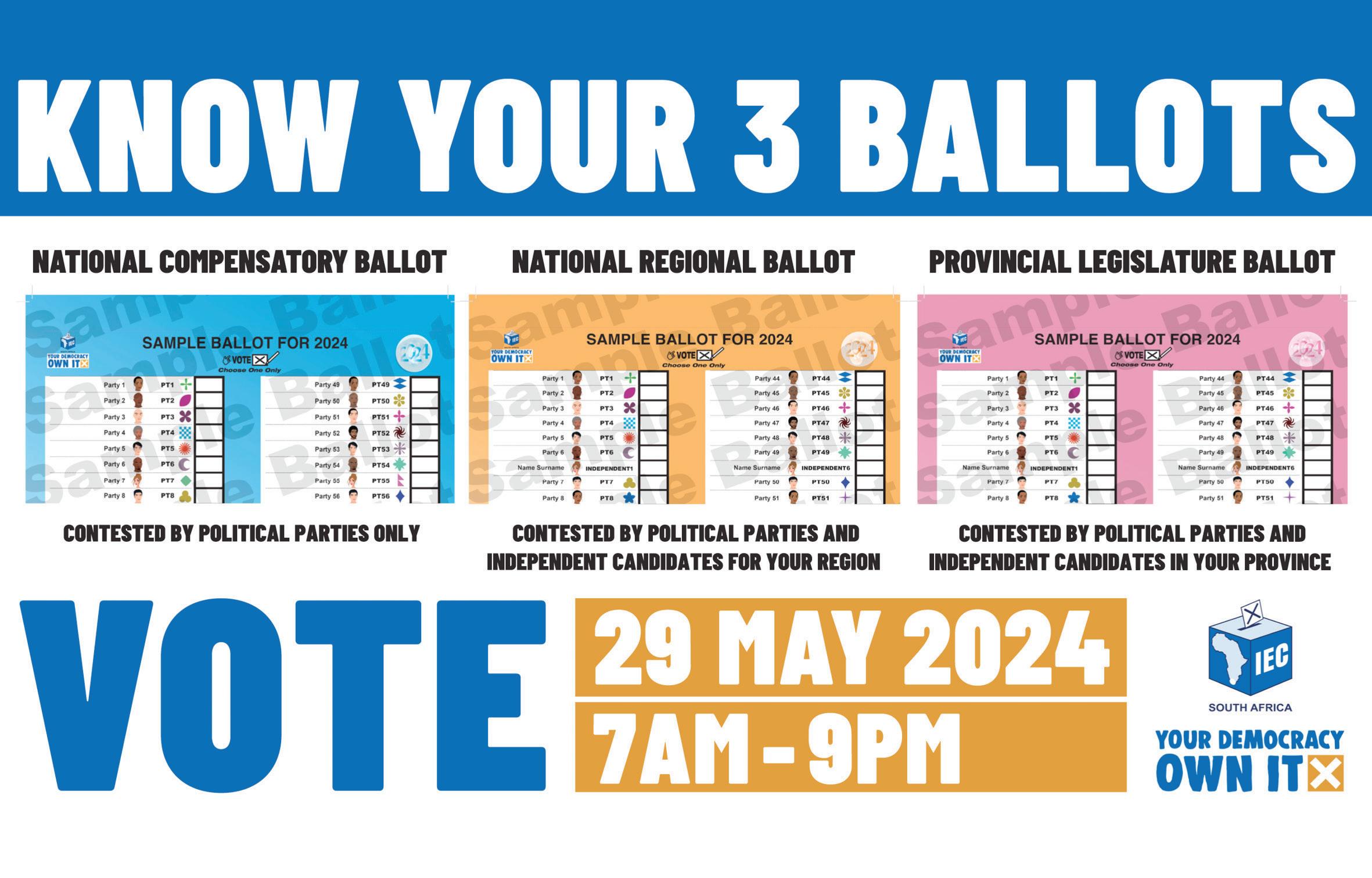
IMAGES: SUPPLIED ISSUE 44 VOICE OF LOCAL GOVERNMENT 23 ACTIVE CITIZENRY

Can we secure democracy in these times of cyber warfare?
This year will be a bumper one for elections across the globe. It is also predicted to be a bumper year for cybercrime as artificial intelligence’s true power comes to the fore, writes GILCHRIST MUSHWANA,
director at BDO South Africa and head of Cybersecurity Service Line
The crossover between the two means that not only has the battleground for democracy shifted into the digital arena, but the entire election process itself is under cyberthreat.
According to Time magazine, globally, more voters than ever will head to the polls as at least 64 countries are meant to hold national elections – 15 of these countries are in Africa. This represents a combined population of about 49 per cent of the global population. The results for many will prove consequential for years to come and also determine who governs more than 50 per cent of the world’s gross domestic product.
Unfortunately, although these acts of democracy give millions of people a voice, simply holding an election does not mean the process will be free or fair. Especially as the rapid adoption of digital is predicted to result in some of the most potent cyberattacks in 2024.
With the proliferation of technologies, such as generative artificial intelligence (AI), and their use by cyber adversaries
becoming more widespread, safeguarding the integrity and fairness of the electoral process becomes of paramount importance. However, it is worth noting that while generative AI will add to the complexity of attacks, it is not the only concern regarding the rise in cybercriminal activity due to geopolitical tensions.
Cybercrime is no longer simply about hacking IT systems to access and exploit information. Sophisticated digital tech is now also being used to cause major social disruption, fanning the flames of geopolitical tensions by being the catalyst for misinformation, disinformation and fake news.
A REIMAGINED THREAT LANDSCAPE
To understand the cybercrime and election security nexus, it is important to understand exactly what threats we are up against.
AI-powered algorithms are being leveraged to amplify false narratives and sow public discord. Misinformation –false or misleading information spread unwittingly – and its more sinister counterpart, disinformation – information


disseminated with the intent to deceive – has never been more prevalent across social media platforms. A World Economic Forum survey named misinformation and disinformation from AI as the top global risk over the next two years – ahead of climate change and war. These are targeted tactics to specifically manipulate public opinion, undermine trust in democratic processes and ultimately sway election outcomes.
Another concerning trend is the emergence of model information, a
24 VOICE OF LOCAL GOVERNMENT ISSUE 44
Gilchrist Mushwana

THE STATE OF DIGITAL IN SOUTH AFRICA IN 2024
DataReportal’s essential headlines for digital adoption and use in South Africa in early 2024 shares that:
• There were 45.34 million internet users in South Africa at the start of 2024 when internet penetration stood at 74.7 per cent.
• South Africa was home to 26 million social media users in January 2024, equating to 42.8 per cent of the total population.
deceptive technique that uses AI-generated content to mimic real communication. Deepfake videos, AI-generated articles and false social media profiles increasingly blur the line between truth and fiction, making it challenging for voters to separate fact from fiction.
Essentially, AI enables cybercriminals to launch highly co-ordinated and targeted attacks with very little need for human intervention. Deep learning algorithms can analyse vast amounts of data to identify vulnerabilities, exploit loopholes in cybersecurity defences and orchestrate large-scale disinformation campaigns. As AI evolves, so too do the capabilities of malicious actors, posing a significant challenge to election integrity worldwide.
In terms of disruption, rogue actors, extremists and even opposing electoral parties, in some cases, are increasingly
leveraging cyber capabilities to undermine election communication, destabilise governments and generally create chaos.
The consequences of these cyberthreats extend far beyond the ballot box. A compromised election erodes public trust in democracy, undermines the legitimacy of elected leaders and fuels social and political polarisation.
LOOKING AT ELECTION SECURITY THROUGH A LOCAL LENS
South Africa faces the same security concerns as its global counterparts. We do, however, have an additional challenge when it comes to cyber tactics – the vast digital divide with which the country grapples.
Along with a lack of digital skills development in some areas, connectivity is another bottleneck for development. Without good internet access, owning a technological device has little to no benefit. Data costs are high and ICT infrastructure is weak in many areas. These factors leave the door wide open for bad actors to intensify disinformation or fake news campaigns that leave little room for fact-checking or debunking.
There is also a massive gap in awareness and education around cybercrime, not only in terms of elections, but also across the board, which leaves many people increasingly vulnerable. How do we combat this? Unfortunately, there is no silver bullet. A long-term strategy would include working towards strengthening controls in terms of regulating technology to temper the capability of people to manipulate information, while, at the same time, investing in further education so that citizens can critically analyse information presented to them.
2024 WILL BE A TEST OF GLOBAL RESILIENCE
We can’t predict how cybercrime will impact the outcome of global elections. The rapid rate of digital transformation has essentially levelled the playing field because we have yet to see the extent to which bad actors will go to disrupt or a successful cyber-defence strategy from any country come into play.
All we know is that 2024 is not just an election year, but rather the election year that will form the litmus test for cyber-resilience in a new era.
MOBILE CONNECTIONS IN SOUTH AFRICA IN 2024
Data from GSMA Intelligence shows that there were 118.6 million cellular mobile connections in South Africa at the start of 2024.
However, note that many people worldwide use more than one mobile connection – for example, they might have one connection for personal use and another for work – so it’s not unusual for mobile connection figures to significantly exceed figures for total population.
GSMA Intelligence’s numbers indicate that mobile connections in South Africa were equivalent to 195.4 per cent of the total population in January 2024.
The number of mobile connections in South Africa increased by 4.2 million (+3.7 per cent) between the start of 2023 and the start of 2024.
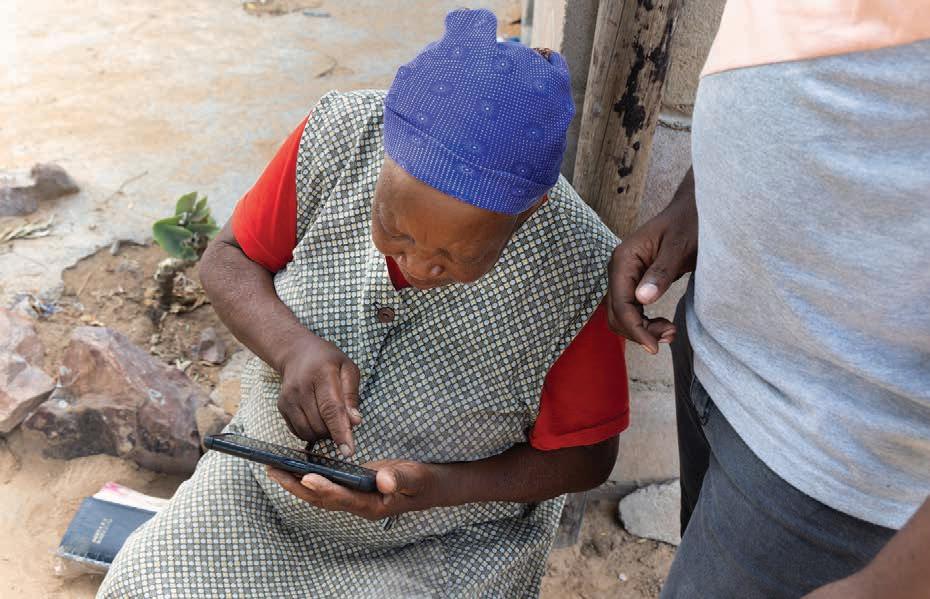
IMAGES: SUPPLIED
ISSUE 44 VOICE OF LOCAL GOVERNMENT 25 TECHNOLOGY
GData-driven teaching
We’re a gem in the middle of Thembisa, a haven for kids, building their potential, shares
rowing from 600 to more than 1 000 learners, the school has seen an incredible evolution in recent years. Our teaching methodologies and school management have transformed and we’ve witnessed the positive effects on our learners and the broader community.
I embarked on my teaching career in 2011, starting at Sedibeng, a township school with just 13 teachers in Thembisa, Gauteng. Over the years, there has been evidence of remarkable growth at the school. We’ve developed and grown the school ... currently, there’s one principal, two deputies, four heads of department and 25 post-level one teachers.
USING DATA FOR ACTIONABLE ANALYTICS
One of the latest programmes where the school is investing time is the Data Driven Districts (DDD) programme. The DDD programme is about using data and analytics to turn teacher, learner and management information into actionable analytics.
The data is extracted from the public school software system, the South African School Administration Management System, offered by the Department of Basic Education, and is making significant changes to how educators use data.
It tracks educator information, learning activity, learner achievement and other data such as attendance records. In turn, data insights allow the teaching staff to evolve everything from lesson plans to learning intervention strategies.
I remember the cumbersome manual processes that took time away from my true passion, educating. I remember there would be handwritten reports and handwritten schedules,
LINEO KOLOBE, Sedibeng Primary School’s principal
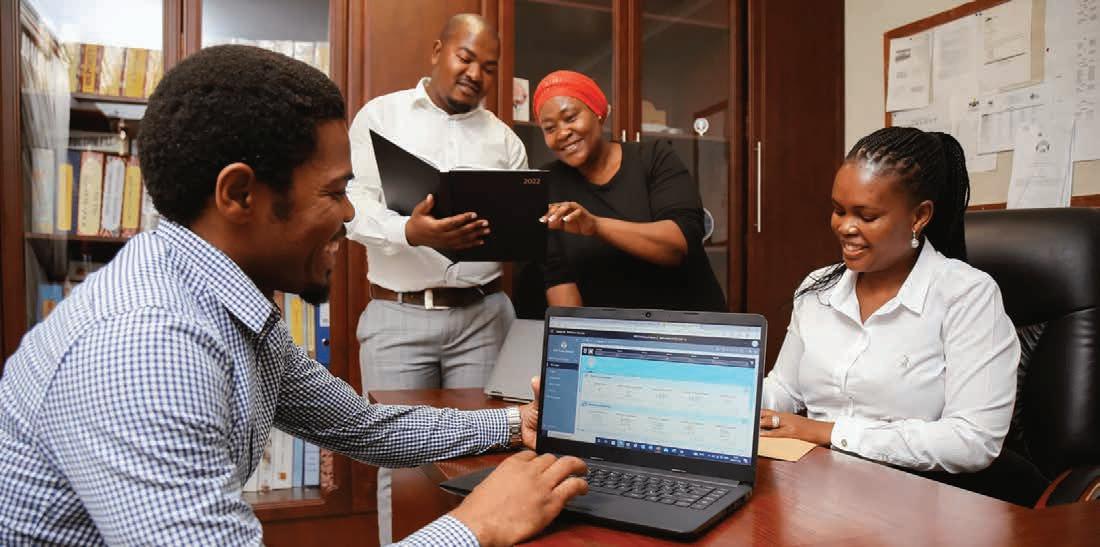
and we’d spend days making and balancing schedules.
Since 2016, DDD has helped the school to streamline data capturing, report generation and performance analysis, significantly reducing administrative burdens.
However, more importantly, it also empowers educators to make informed decisions, providing a holistic understanding of learner performance and enabling targeted interventions to maximise their potential. The program enables educators to identify at-risk learners, intervene promptly and tailor support based on individual needs.
I can now transform meetings into curriculum-driven discussions. With concrete data at their fingertips, teachers can address core issues based on evidence rather than assumptions.
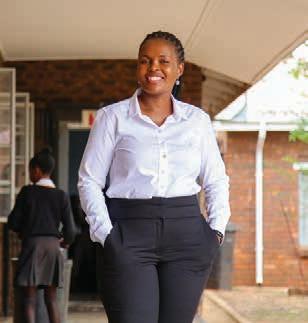
One of the programme’s standout features is its accessibility and usability. Principals and teachers can manage schools and learners
from anywhere, anytime. I was in Japan recently and could check my school’s performance while outside the country. This level of convenience empowers school leaders to monitor progress, track performance and take informed action regardless of their location.
Sedibeng Primary School stands as a shining example of how data-driven educational initiatives can transform teaching and learning. Through data-enhanced decision-making, we can foster continuous improvement and become a haven of academic excellence.
ACADEMIC EXCELLENCE
I take immense pride in the academic achievements of Sedibeng Primary School. While sport may not be our forte, our school excels in academics, chess, spell-a-thons, and mathematic Olympiads. I attribute our success to a commitment to academic excellence and an unwavering focus on nurturing students’ potential.
To see the learners’ faces, to experience their pureness, humility and love is what drew me to and made me love the profession. This primary school is my happy place. It’s home for me.
IMAGES: SUPPLIED
Data-driven teaching at Sedibeng Primary has changed the way teachers teach.
26 VOICE OFLOCALGOVERNMENT I SSUE44 PROFILE
Lineo Kolobe
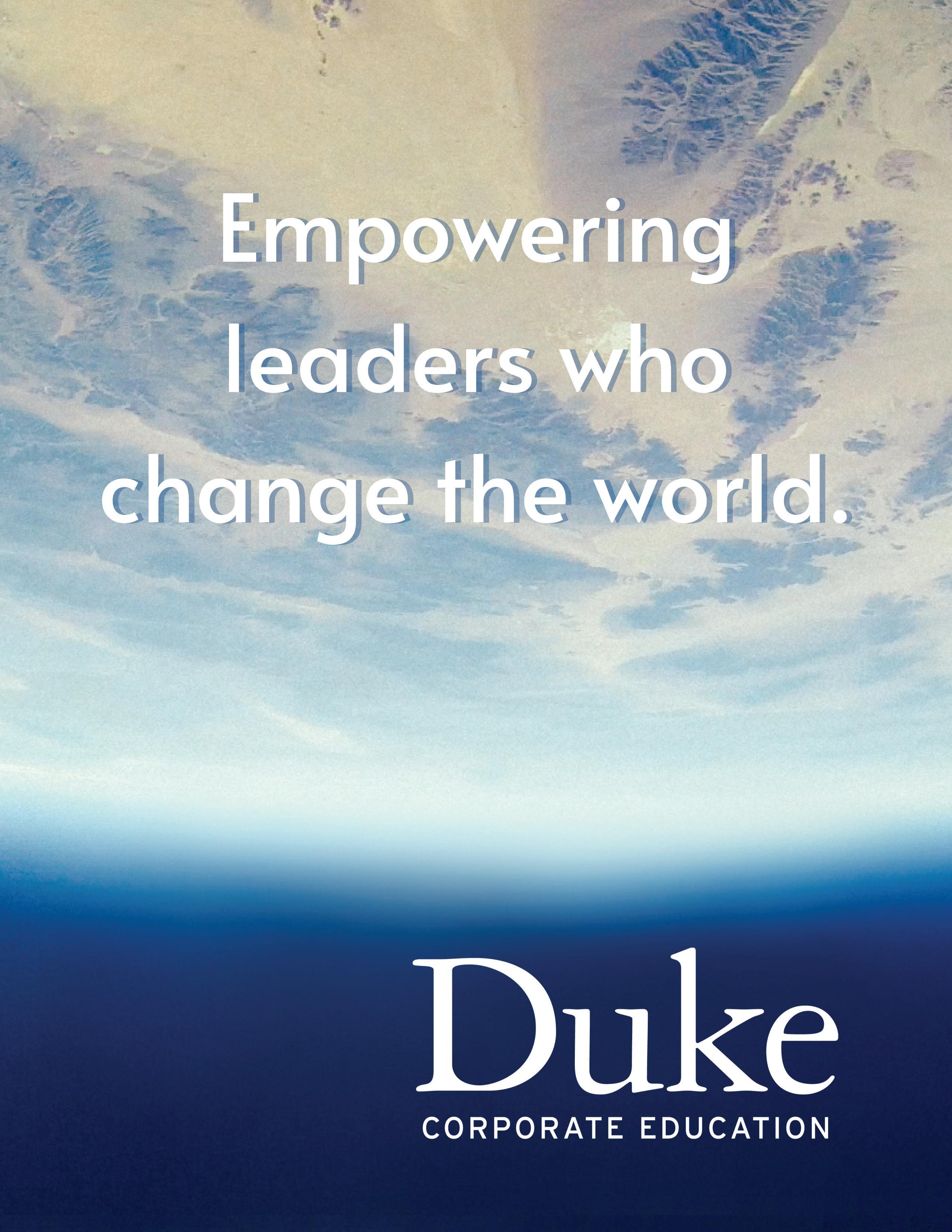


A tsunami of water issues
More than 100 municipalities are failing to deliver clean drinking water, according to reports released by the Department of Water and Sanitation last year. This was one of the issues highlighted at a water summit in January, writes MATTHEW HIRSCH
To fix the challenges around water delivery issues, a nationally co-ordinated task team, comprising the Departments of Water and Sanitation (DWS) and Corporative Governance and Traditional Affairs (CoGTA), and the South African Local Government Association (SALGA), is being set up to initiate and co-ordinate Municipal Systems Act Section78 processes in certain municipalities.
ISSUE 44 VOICEOF LOCAL GOVERNMENT 29 WATER
In a media statement, the DWS said: “The purpose is to review service delivery mechanisms for water and sanitation services, in an effort to address the decline of these services as outlined in the Blue Drop, Green Drop and No Drop reports, recently released by DWS.
“The department carries out the drop assessments in its role as regulator of the water services sector in terms of the Water Services Act. The regulator has a legal obligation to monitor the adherence of Water Services Authorities (WSAs) to national norms and standards, to inform the public of the results of this monitoring and to take action where norms and standards are not being met.”
THE DROP REPORTS
According to the DWS, the task team will focus on the 105 municipalities that are in the critical and poor-performing categories in terms of the Blue Drop and Green Drop reports.
“The DWS, CoGTA, Municipal Infrastructure Support Agency, Department of Human Settlements and National Treasury are providing extensive support to assist WSAs with providing water and sanitation services. This includes providing water and sanitation infrastructure grants worth more than R20-billion per annum, technical and engineering support and assistance, capacity-building and training and financial management advice and support.
“However, despite all this support, the drop reports indicate that municipal water services have declined sharply. This indicates that there are limitations to which support from the national government can solve the problems and that more fundamental reforms are required,” the DWS added.
In her address at the summit, CoGTA Minister Thembi Nkadimeng stressed that the results of the reports were “disturbing because of the downward trend of performance”.
“The Blue Drop Report also indicates that municipalities are abstracting more raw water from the water resources systems than authorised, by 356 255kl/d. This is not a good sign as it will lead to severe conditions of water insecurity. It is extremely important to develop and implement water conservation and
“The department carries out the drop assessments in its role as regulator of the water services sector in terms of the Water Services Act.” – Department of Water and Sanitation
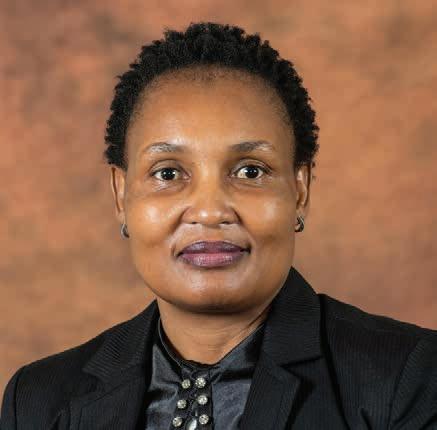
water demand management strategies to reduce water wastage and improve water use efficiency,” she said.
DI D YOU KNOW?
South Africa loses a lot of water through evaporation. Professor Anthony Turton of the Centre for Environmental Management at the University of Free State, says we can learn a lot from Australia, which has started storing water in underground aquifers instead of dams.
“The Vaal Dam is critical for the entire Gauteng economy. Evaporation off the dam exceeds natural inflow for 11 months of the year,” he says “If the Vaal Dam was not supplemented by other sources, such as the Tugela and Lesotho Highlands, it would be unable to sustain Gauteng, just because of evaporation. Only eight units out of one hundred units of rain falling across the entire South African footprint end up in the river. The rest (92 units) is lost through a combination of evaporation and transpiration.”
GOOD IDEA BUT IS IT PRACTICAL?
While experts have applauded DWS Minister Senzo Mchunu for reinstating the drop reports, they have doubts about how effective the task team will be.
Professor Anthony Turton, from the Centre for Environmental Management at the University of Free State, says the task team is to be welcomed, but the situation is dire. Some municipalities, he explains, have become completely dysfunctional.
He cites the Emfuleni Municipality in Gauteng as an example. “The municipality has literally collapsed. Part of that collapse is the sewage management, with over R3-billion already spent on trying to fix it.” He said that under the previous minister, the Blue Drop and Green Drop reporting standards were dropped. “Minister Mchunu has reversed this and reinstated the reporting standard, which, indeed, shows the extent of the failure by more than 60 per cent of the municipalities.
“While I welcome the joint task team, I also believe that the underlying cause of the failures has never been analysed, so in effect, they don’t know what it is that they are trying to fix. I have repeatedly called for a root cause analysis to identify the underlying drivers of failure, but this call has been rejected systematically.”
CLEAN WATER IS A CONSTITUTIONAL RIGHT
Carin Bosman, a water governance specialist, says while the task team is a great idea, she is unsure whether it will fix the issues in terms of local government performance.
“If you look at the list of poorest performers, most of those poor-performing municipalities are very small and rural.” She adds that some of these municipalities don’t have the “knowledge or capacity” to fix things themselves.
“It doesn’t help to speak to the officials in the municipality; they are not the guys who make budget decisions, it’s the councillors,” Bosman says. “Unless you train and educate your councillors on the
30 VOICE OF LOCALGOVERNMENT I SSUE 44
Thembi Nkadimeng
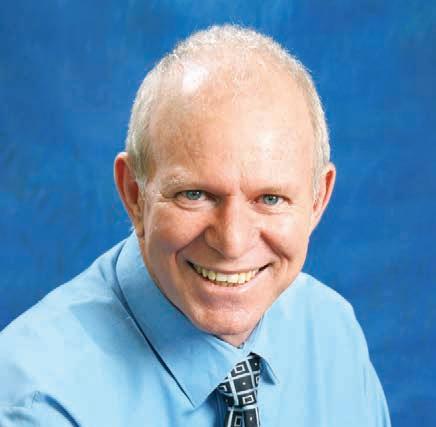
absolutely dire need for huge infrastructure expenditure on water and sanitation infrastructure, they are simply not going to spend that money.
“You can be the best process controller in the world, but if you don’t get the budget to buy chlorine, you are not going to be able to disinfect drinking water.”
Bosman adds that Tshwane and Johannesburg are examples of municipalities where unstable leadership affected service delivery.
HEALTHY COMPETITION
Bosman says the minister should be congratulated for bringing back the reports. “This is a tool that raises public awareness and also creates recognition for those people who are doing it right. Of the 18 municipalities that got it right, it’s a matter of pride. That creates healthy competition between the municipalities. One can only establish that kind of competition if there is an equal footing on which municipalities participate.
“One cannot expect Namibia to beat South Africa in a World Cup final; the same applies here. One cannot expect a small municipality in the rural Eastern Free State to compete on an equal footing with a well-funded municipality in the Western Cape Winelands,” she explains.
She says that while it’s great that the reports are back, the results are quite concerning. “Clean drinking water is one of our basic rights enshrined in our Constitution and should be the first service the municipality delivers. Even if there are potholes or nonworking street lights, at least deliver clean drinking water.”
Delivering clean water, Bosman adds, is not diffi cult. “But you need chemicals, machines, people to operate them, and you need electricity. People often don’t make the connection between the
WHAT DO THE REPORTS SAY ABOUT OUR DRINKING WATER?
At the water summit, it was agreed that Water Services Authorities need to fundamentally change the way they deliver water and sanitation.
Municipalities have been categorised into four groups based on their drop scores during discussions on how to improve.
According to the Department of Water and Sanitation: “The fi rst group comprised 67 municipalities with an average ‘critical’ score in their water supply and/or wastewater systems in the 2023 and 2022 full Green Drop Report . The second group consisted of 38 municipalities with an average ‘poor’ score in their water supply and/or wastewater systems in the 2023 and 2022 full Green Drop Report . The third group includes 27 municipalities with an average ‘average’ score in their water supply and/or wastewater systems in the 2023 full Blue Drop Report and 2022 full Green Drop Report . Lastly, the fourth group comprised 12 municipalities with an average ‘good’ or ‘excellent’ score in their water supply and/or wastewater systems in the 2023 full Blue Drop Report and 2022 full Green Drop Report
“The 105 municipalities in the critical, poor and average categories were urged to consider appointing reputable, credible and competent water service providers for the next two to three years. This move will help address the current gaps in service delivery and ensure that communities have access to clean and reliable water sources. This could be in the form of another municipality that performed well in its assessment scores in all reports, a water board or a competent private water services provider.”
“You can be the best process controller in the world, but if you don’t get the budget to buy chlorine, you are not going to be able to disinfect drinking water.” – Carin Bosman RE A

effect of load shedding on the municipal operations of water treatment works.
“There is no exemption for water treatment works. That also means all the pumps go off. Water cannot be pumped to reservoirs and sewage can’t be pumped from the low-lying drains back to the sewage
works, so it overflows and goes into our rivers. The municipalities lack the money to buy generators or diesel to run these pumps. Every time the power goes off in a big facility, such as a pump station, infrastructure gets damaged.”
Blue Drop Report 2023

 Professor Anthony Turton
Carin Bosman
Professor Anthony Turton
Carin Bosman
ISSUE 44 VOICE OF LOCAL GOVERNMENT 31 WATER
Bosman believes one of the best ways to measure if countries are delivering clean water is through their infant death rate. “We can’t always taste when our water is not treated properly. We trust our municipalities to treat our water properly.”
She adds that women should be at the forefront when it comes to planning. “Local councillors need to be more flexible by having meetings during the weekend or in the evenings as women work during the day.
“Having one meeting in the rural areas is insufficient to grasp the real needs of the community. Women are the first defence. They teach their children to wash their hands, they fetch the water, and are exposed when there is inadequate sanitation,” Bosman concludes.
WATER REALLY IS PRECIOUS
Eskom is one entity that can be fixed, says Professor Anthony Turton of the Centre for Environmental Management at the University of Free State.
“Water is managed through about 1 000 treatment plants for potable water, and about the same for sewage. Each of these is owned and managed by one of the hundreds of municipalities. All are in distress, with about 60 per cent in critical condition.”
Professor Turton maintains that the collapsing infrastructure is not only affecting access to water, but also jobs. “It’s only a question of time before factories are unable to produce goods because of disruptions to water services. Then layoffs begin, followed by shortages in the retail sector. The water crisis is ultimately an existential threat to the viability of our national economy.”
Several municipalities struggle to supply running water. Water supply and treatment is in a “critical state” in more than 60 municipalities, according to the latest Blue Drop Report
KNYSNA WATER CRISIS
Several suburbs in the popular tourist town of Knysna in the Western Cape’s Garden Route went
Green Drop Watch Report 2023
RE AD


without water for weeks during December and January.
Mario Ferreira, a Gift of the Givers co-ordinator in the area, says the organisation intervened in December at the request of the municipality. The aid organisation supplied three water tankers, which provided about 100 000L of clean water daily for two weeks.
“One of the reservoirs had to be cleaned out due to the discovery of a body. This aggravated the water shortage in the Khayalethu area, but was not the reason why the other areas within the Knysna municipality were without water. Residents of these areas voiced their extreme disappointment about the way the current Knysna municipal management operates.
“Water is an essential item for all households and should be handled and seen as one of the first priorities when it comes to municipal service delivery. The Knysna municipal water crisis is not due to a lack of water availability, but bad service delivery,” explains Ferreira.
Knysna municipal manager Ombali Sebola says the municipality is committed to ensuring the provision of potable water as a fundamental right. “Although some areas may
No Drop Report 2023
RE AD


experience intermittent water outages due to pipe bursts, maintenance or repair activities, our communication department strives to keep affected areas informed. Additionally, water trucks are dispatched to assist residents during such outages.”
The municipality acknowledges infrastructure challenges, including ageing facilities and increased demand due to demographic growth and urbanisation.
“We currently have two water trucks, and if the need arises, we are prepared to outsource additional services from local providers in Knysna. We remain committed to improving our water infrastructure to better serve the community,” adds Sebola.
GOOD LEADERSHIP IS NEEDED
Prof Turton says good leadership is crucial for solving South Africa’s water woes.
“We now see many examples of inappropriate solutions being applied to misdiagnosed problems. Good leadership would recognise that success over time is all about appropriate, lowest-cost solutions that are capable of delivering what society needs to prosper and flourish.”
IMAGES: SUPPLIED
32 VOICE OF LOCAL GOVERNMENT ISSUE 44 WATER
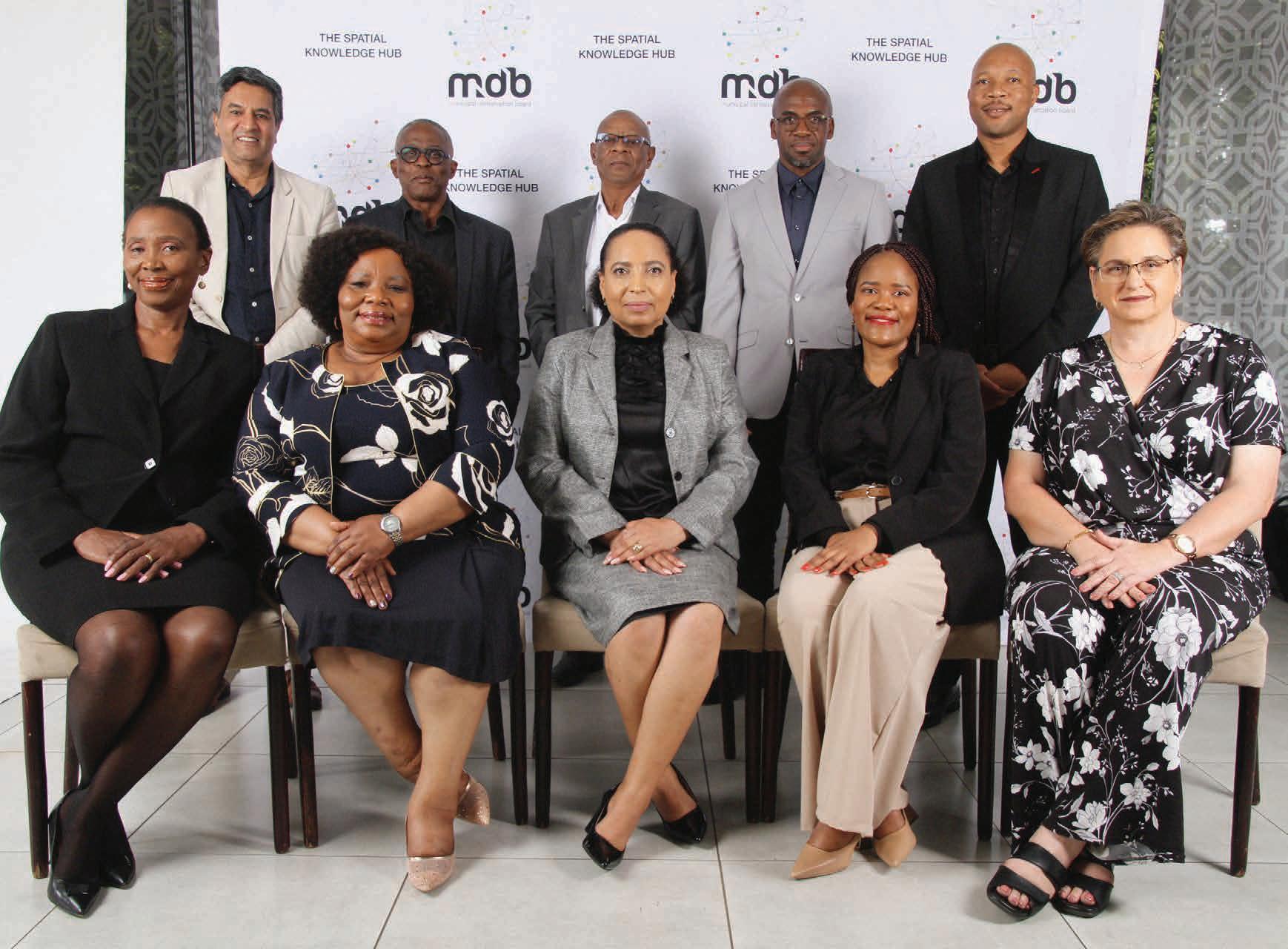
MDB welcomes a new Board
President Cyril Ramaphosa appointed a new Board at the Municipal Demarcation Board (MDB) in February 2024. The new Board will serve a ve-year term, ending in February 2029. The new Board members brings with an invaluable experience and a wealth of expertise drawn from both the public and the private sectors that will provide strategic direction for the organisation.
MUNICIPAL WARD CHANGE PROCESS



The MDB will commence with the Municipal Ward Delimitation preliminary process in July 2024. Updates on the process will be shared on the MDB website and social media platforms. Scan
FOR MORE INFORMATION: Tel: 012 342 2481 Web: www.demarcation.org.za FOLLOW US: Of cialMDB1 demarcationboardmdb municipaldemarcationboard Municipal Demarcation Board Eco Origins Of ce Park Block C1 349 Witch-Hazel AvenueHighveld, 0157
The MDB’s new Board members. Back from left: Dr Udesh Pillay, Pascal Moloi, Thabo Manyoni, Sibongiseni Maseko, and Dr Matheakuena Mohale. Front from left: Gabisile Gumbi-Masilela, Ntombekaya Baart, Edith Tukakgomo, Marcia T Mabuza, and Prof Susan Bouillon.
the QR to go to the website
Investing in our future
Embracing the union of education and employment is the true catalyst for progress. By JACQUES FARMER, managing director of Prisma Training Solutions
As the 2024 national election draws near, South Africa stands at a crossroads. The air is filled with a sense of expectation, where hope for a better future mingles with anxieties about the challenges ahead.
Citizens are hungry for leaders who will confront the man on the street’s most pressing challenges – unemployment and the skills crisis. The nation grapples with staggering unemployment rates (the unemployment rate ticked up slightly to 32.1 per cent in the fourth quarter of 2023, according to Statistics South Africa’s quarterly labour force survey). These figures aren’t just numbers; they represent the harsh reality endured by millions, leading to widespread poverty, social unrest and a deep-seated sense of despair. To break free from this crippling stagnation, a revolution is needed, not just political, but also a revolution of education, skills and opportunity.
BRIDGING THE GAP BETWEEN EDUCATION AND EMPLOYMENT
Such a revolution demands a concerted effort – from both the government and the private sector. Investments in education must be intensified, ensuring quality learning reaches every corner of the country, and vocational programmes must be given a complete overhaul. Gone are the days of generic qualifications; the modern, digital-first economy demands precision skills. But education alone is
not enough, experience is also necessary. Here, businesses must be geared to provide the right environment for learned theory to find practical applications to maximise opportunities for skills growth and development.
However, the government alone cannot orchestrate this revolution and the private sector, particularly industries such as mining, must be used as a potent catalyst for change.


Companies should look towards expanding employment opportunities through targeted training and development initiatives. For example, mining houses collaborating with local communities, nurturing the talent hidden within through multiskilling programmes that equip locals to operate machinery, coupled with dedicated channels to integrate them into the workforce, would be a transformative step. To get to this point, it is crucial to move beyond skills development being a just tick-box exercise to garner points that only have corporate worth.
We must transition to a mindset where skills development becomes
The union of education and employment must be seen not merely as a transactional exchange, but rather as a powerful force for progress.
about igniting passion and fostering entrepreneurial spirit. This could be in the form of mentorship programmes led by industry veterans who share their wisdom and experience with eager young minds or business incubators sprouting up in mining towns, nurturing the seeds of local innovation and enterprise.
SKILLS DEVELOPMENT AS THE CATALYST FOR UNITY
The union of education and employment must be seen not merely as a transactional exchange, but rather as a powerful force for progress.
Imagine a young woman from a rural village, equipped with the skills to operate a drone, mapping mineral deposits with precision. Imagine a young man, once struggling to make ends meet, transformed into a sought-after craftsman due to his welding capabilities. These are not stories; they are the building blocks of a brighter future when the right skills meet the right opportunities.
This is the future we must strive for – a future where skills development acts as a bridge, connecting education to a fulfilling professional life, in which individuals are empowered to provide for themselves
34 VOICE OF LOCAL GOVERNMENT ISSUE 44
Jacques Farmer
and their families. As a result, poverty will recede, replaced by the dignity of economic self-sufficiency. Crime rates will plummet, and communities, once fractured by despair, will find unity in their shared prosperity.
As is clear, this isn’t just an economic imperative, but a moral one. An opportunity exists to build a South Africa where dignity and hope are fundamental rights, not luxuries.
FORGING STRONG PARTNERSHIPS BETWEEN COMMUNITIES AND CORPORATES
The 2024 election acts as a watershed opportunity. Let us choose leaders who understand this fundamental interplay IMAGES:
between education and employment, who will champion the skills revolution and invest in our youth, equipping them to become the architects of our tomorrow.
To this end, training providers in every sector can make a signifi cant difference by embracing this philosophy wholeheartedly and manifesting such a commitment by providing tailored training that recognises the importance of forging strong partnerships between corporates and communities. Training providers can turn tick-box exercises into initiatives specifi cally designed to empower individuals, transform lives and ignite a brighter future for all. Training providers can achieve this by dispensing
the tools, providing guidance and delivering a platform for communities to take charge of their own path towards growth and prosperity.
INVESTING IN THE FUTURE OF OUR COUNTRY STARTS TODAY
As we stand on the cusp of change, ready to cast our ballots, let us remember – the seeds of progress can only be sown in education, nurtured by skills development, and reaped in the fertile ground of employment. Let us make the 2024 election a catalyst for real, lasting change, a moment where South Africa embraces the transformative power of the integration of education and employment.
Investments in education must be intensified, ensuring quality learning reaches every corner of the country, and vocational programmes must be given a complete overhaul.

SUPPLIED
ISSUE 44 VOICE OF LOCAL GOVERNMENT 35 SKILLS DEVELOPMENT
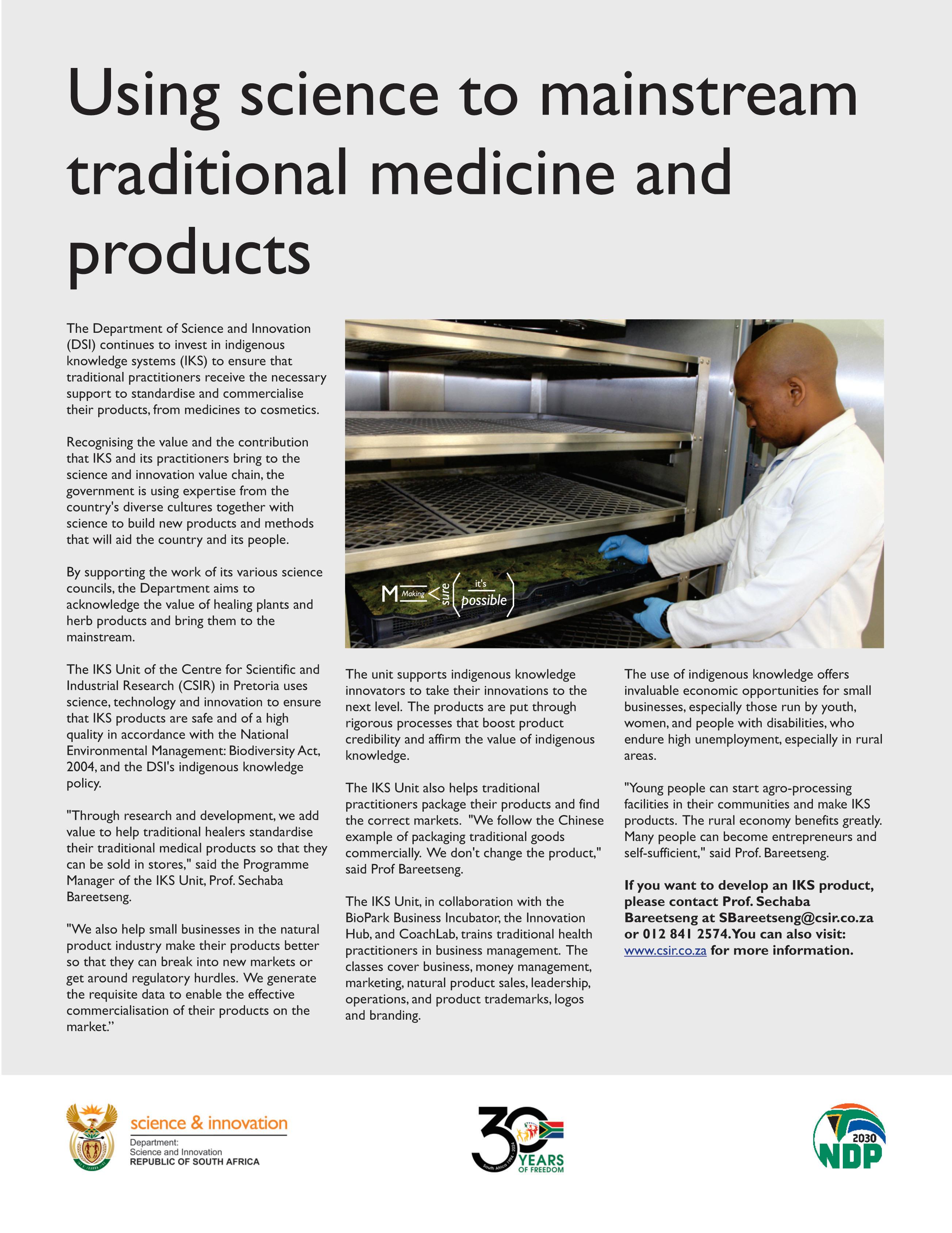

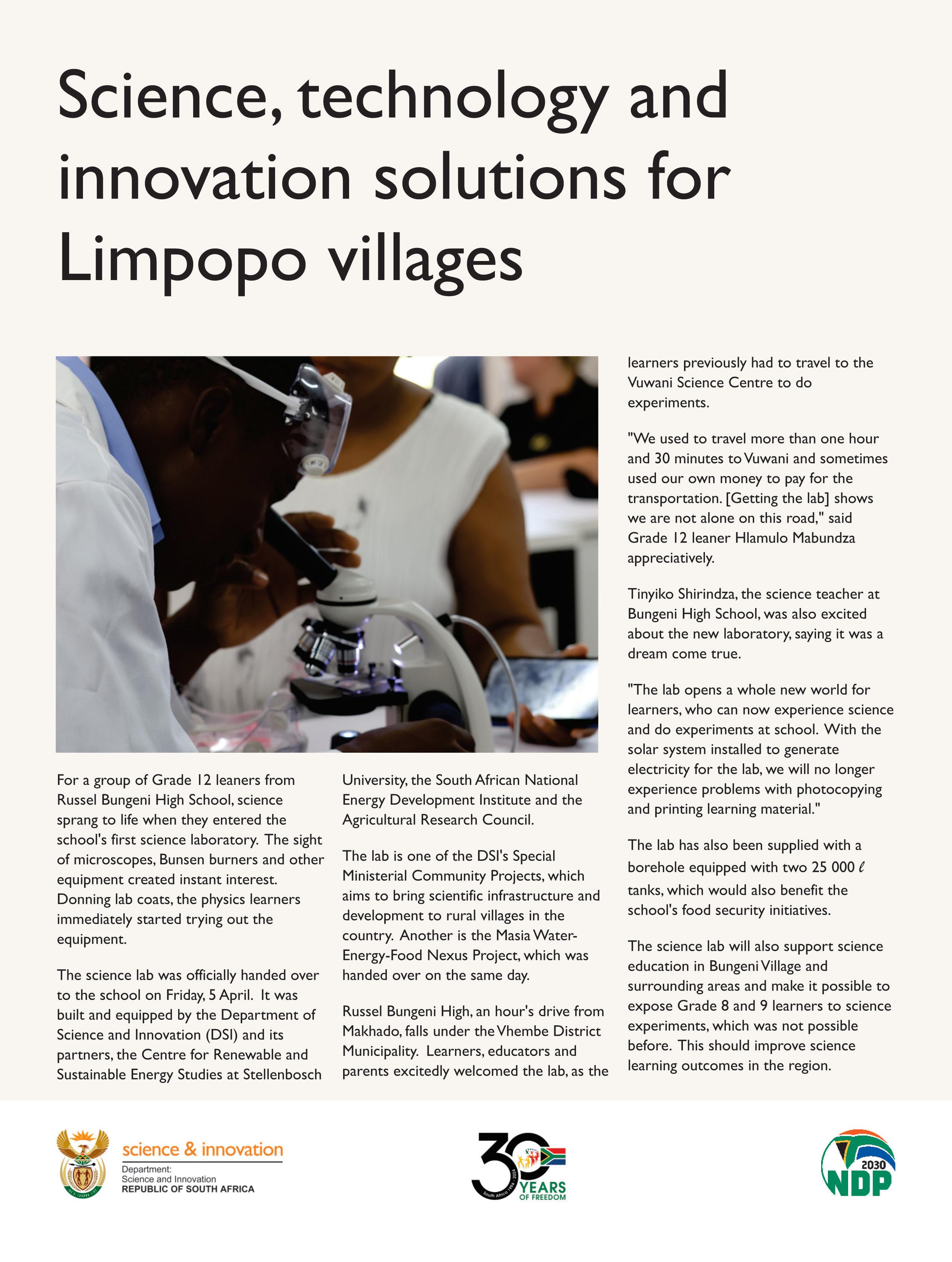
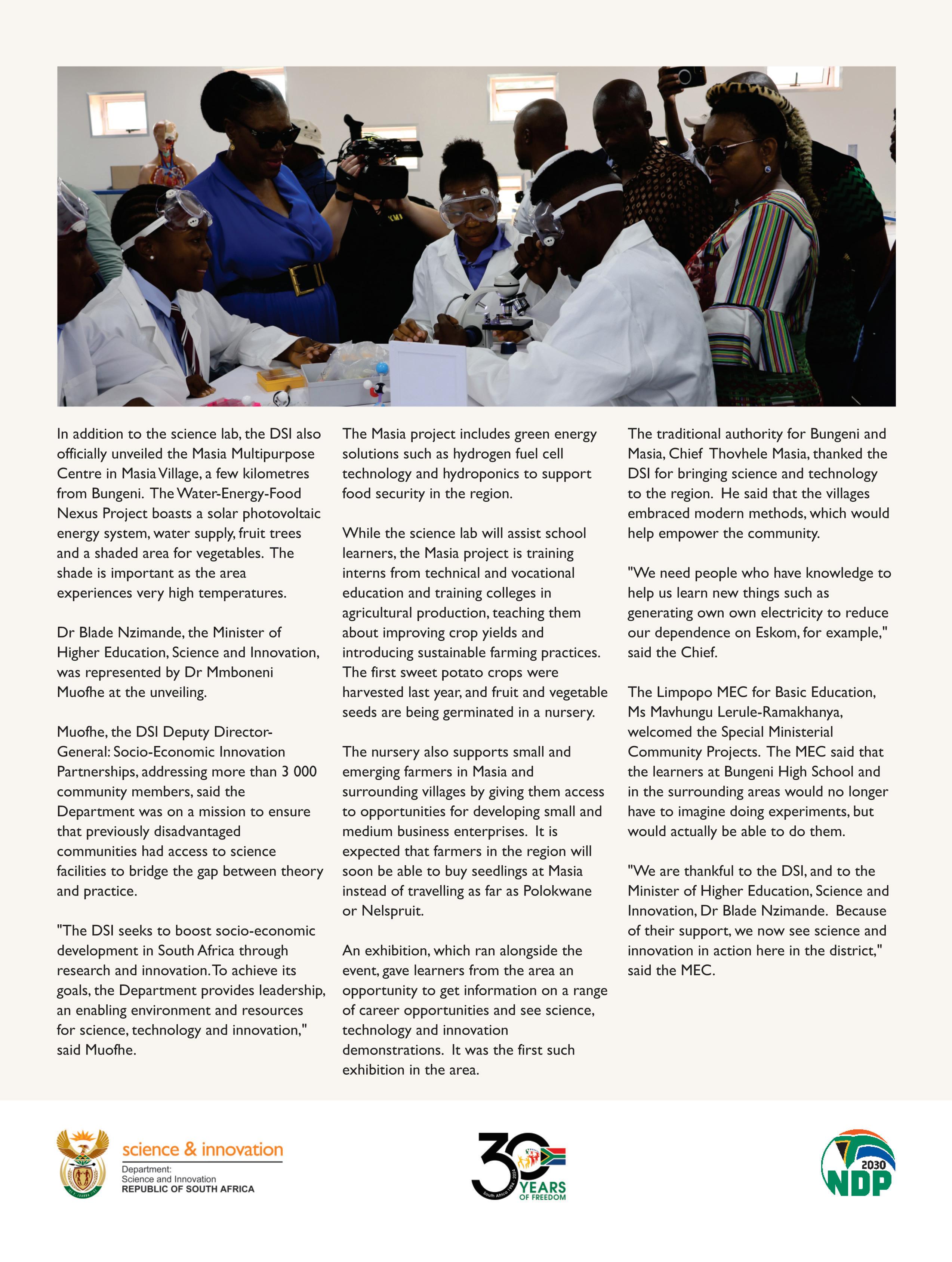

A changing grid requires flexibility
DWIBIN THOMAS, cluster automation leader at Schneider Electric, shares that with the introduction of prosumers, the need for grid flexibility is amplified
Traditionally, grid flexibility involved utilities enrolling large industrial energy consumers in load curtailment and demand response (DR) programmes to help adjust the balance between supply and demand. These electro-intensive users would reduce or shift their energy use during peak periods.
However, today, grid flexibility has become far more complex. For one, increasing investment in renewables means that energy flow is bidirectional, with decentralised energy coming from multiple DERs (distributed energy resources).
Furthermore, as organisations and even individual households start moving towards generating their own electricity, we now have a growing landscape of prosumers that both produce and consume energy, further amplifying the need for grid flexibility.
Traditional demand response shows its limitations in balancing an evolving grid. It represents a critical paradigm shift for utilities and, given the pace of innovation, it is challenging to plan for a future that includes rapidly growing DERs.
Plus – and this is a fundamental challenge – upgrading a decades-old grid takes time and represents large
capital expenditures. Grid-connected prosumers, an increase in electrification and climate uncertainty also mean energy demand will continue to be variable and uncertain.
DIGITISATION LEADS TO FLEXIBILITY
This lack of management could potentially lead to an overloaded infrastructure and compromised power quality.
CHANGE REQUIRES FLEXIBILITY
As mentioned, to establish a more flexible grid we’ll have to keep pace with an evolving landscape. For one, at the prosumer level, we’re seeing a hybrid future taking shape. On one side, more internet of things connected assets (buildings, houses, electric vehicles, and so on) are online, ready to be dispatched and aggregated.
These assets are looking for the right “flex” compromise between efficiency through more automation and freedom of choice enabled by customer engagement platforms.
Second is the grid management, here utilities must optimise each hybrid prosumer and other suppliers of DERs by incorporating the necessary technology (directly or via services vendors) that will enable them to become more agile and flexible.

A digitised grid – one that adapts to these variable energy sources and responds to dynamic challenges – is needed to identify, enrol and aggregate distributed energy resources. These grids of the future realise sustainability as they can incorporate DERs in a more flexible and optimised manner for grid resilience. They adapt faster and are more responsive to weather crises, are more sustainable and reliable and can reduce operational costs with predictive maintenance strategies.
Through digitisation, operators benefit from a consolidated view of the various energy resources feeding into the grid, ensuring that it is managed and distributed methodically based on real-world demand and supply.
Receiving energy from various DERs without proper management is pointless.
At the distribution system operator level, DER management software solutions, tailored to enable the efficient planning, design and operation of today’s flexible, dynamic grid, are available.
These solutions maximise the connection of renewables by leveraging DER flexibility at every level. This approach supports small proof-of-concept projects to full-scale deployment roll-outs that require direct device monitoring, control and integration with third-party aggregators.
DERs management solutions provide energy suppliers and distributors with smarter and more efficient ways to manage the integration of various energy sources into their grid.
At Schneider Electric, for example, our DERs management software options incorporate artificial intelligence and machine learning algorithms, not only analysing historical data, but also considering weather patterns and forecasts that will give utilities additional insight into the renewable energy supply.
IMAGES: SUPPLIED
40 VOICE OFLOCALGOVERNMENT I SSUE44
Dwibin Thomas

Renewable energy
Urgency is required to realise the president’s vision for renewable energy in South Africa, says SAWEA CEO NIVESHEN GOVENDER
The wind sector believes the president’s remarks in his State of the Nation address present an opportunity for the country to build its green energy capability further and provide urgent load shedding relief to the economy.
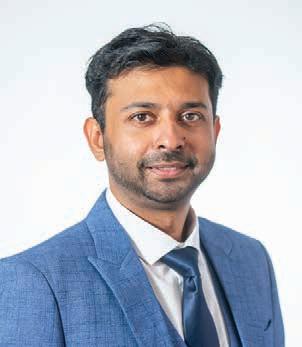
Government’s ongoing commitment to the renewable energy programme, as evidenced by its regulatory reforms and intention to build more than 14 000km of new transmission lines to accommodate renewable energy, are positive measures aimed at stabilising the energy supply, bringing load shedding to an end and boosting the economy. If properly instituted, these measures –underpinned by the Integrated Resources Plan 2023 (IRP 2023) – should go a long way towards
helping government achieve its plans to reduce carbon emissions and promote the creation of jobs for South Africans.
Taking stock of what the country’s immediate renewable energy pipeline looks like – connecting more than 2 500MW of solar and wind power to the grid in the past five years – the president noted that three times this amount is currently in procurement or construction.
IMMEDIATE AND PRACTICAL IMPLEMENTATION REQUIRED
While this is positive, the focus now needs to be on the urgent and immediate practical implementation of renewable energy. The industry is ready to do more, but local market conditions led by grid constraints continue to present challenges for the progression of projects.
More needs to be done, and it needs to be done quickly. The recent extension of the deadline for responses to the revised IRP 2023 presents an opportunity for the Department of Mineral Resources and Energy to incorporate the president’s vision for more renewable energy, which
will create a more robust, aggressive and inspiring IRP 2023 that prioritises a secure supply of electricity.
Greater clarity is needed on the plans for the 14 000km of new transmission lines. We need confirmation of timelines for the project, as well as insight into what role SAWEA can play in supporting this initiative.
While the president said government would enable private investment to fast-track the transmission lines project, SAWEA wonders if the Just Energy Transition Implementation Plan funds would best be spent here.
As a country, we cannot afford to wait. While the transmission lines are being built, we also need a commitment to interim measures that will be put into place – in addition to Eskom’s new curtailment addendum for grid allocation – to support the connection of new generation capacity.
The president rightfully indicated that the renewable energy sector will contribute towards achieving several social imperatives, including job creation, but it needs other industries to work with it to ensure the creation of a greater number of employment opportunities. After all, wind energy offers a cheap and secure supply of electricity, which, in turn, helps spur other industries to create additional jobs.
IMAGES: SUPPLIED ISSUE 44 VOICE OF LOCAL GOVERNMENT 41 ENERGY Niveshen Govender


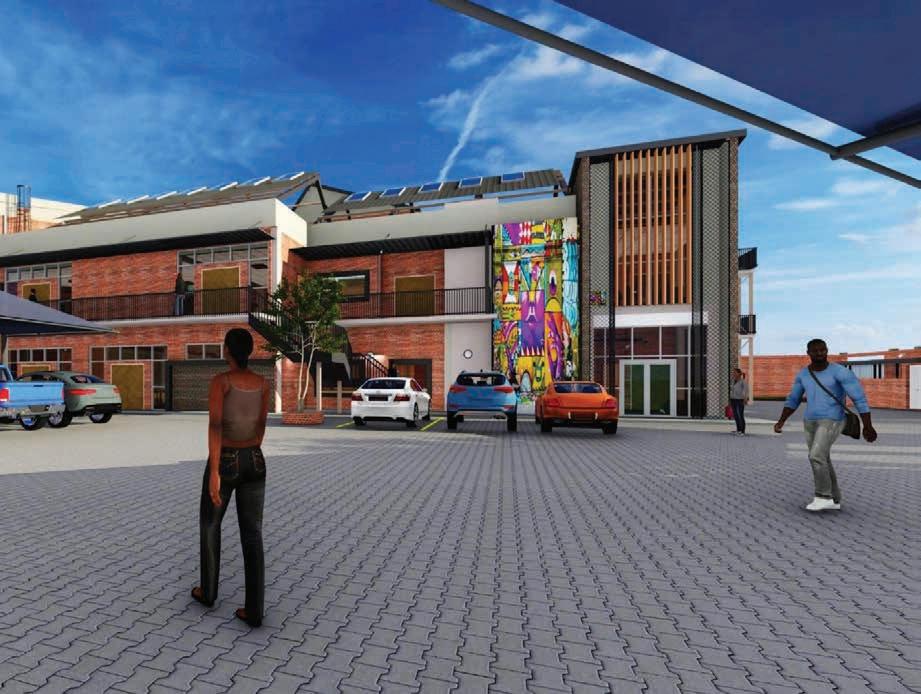

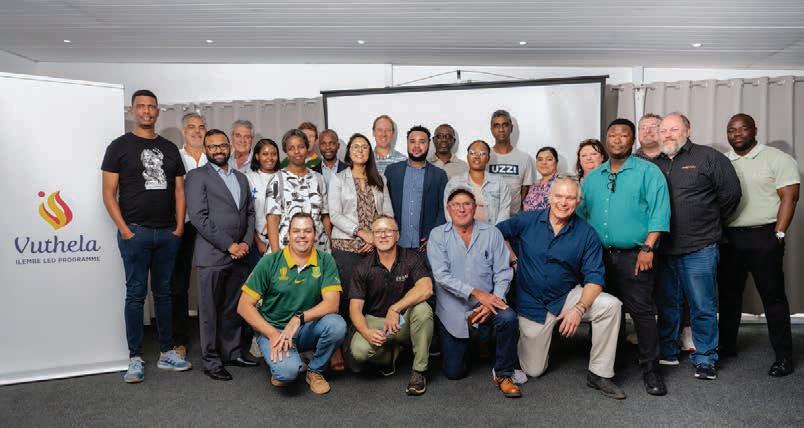
YOUR MUNICIPALITY AT WORK
50
MUNICIPAL OFFICIALS CAN PREVENT FURTHER DETERIORATION OF THEIR AD M INISTRATIONS
Of the country’s 257 local and district administrative areas, 66 are considered dysfunctional. That means more than a quarter of all municipalities are in a state of turmoil.

illegally, tackling corruption may seem insurmountable.

A Department of Cooperative Governance and Traditional Affairs report presented to parliament towards the end of last year also revealed that only 11.67 per cent of municipalities are deemed “stable”.

However, Muhammad Ali, managing director of World Wide Industrial & Systems Engineers (WWISE) and ISO specialist, believes there is a simple solution when it comes to municipal procurement and supply chains: automation.
“The system logs must be protected to ensure there is no foul play. Another advantage is that organisations awarded tenders will be appointed faster. At the same time, machine learning can also identify poor performing vendors that do not conform to standards in executing their duties.”

While Deputy President Paul Mashatile attributes the situation to poor governance, weak institutional capacity, woeful capacity and political instability, corruption also plays a major role. Given the huge amounts of money changing hands
“By working within the Public Finances Management Act and international standards agreed to by the International Organisation for Standardisation (ISO), municipalities can create robust criteria selection, and the automated system can identify the best possible supplier,” he says.
The time has come for the public sector to embrace the ISO standards that have proved so successful in assisting private-sector companies.
“ISO standards promote effective understanding, training and on-the-job implementation. This way, a municipality can see value, understand consequences and ultimately feel satisfied with its performance,” Ali says.
SERVICE DELIVERY
The Ceres River Restoration Programme
Tackling homelessness in Gauteng
Karoo Small TOWN REGENERATION CONFERENCE
Options for reliable electricity supply in Kwadukuza
44
46
47
48
MUNICIPAL LEGAL PRACTITIONERS FORUM IMAGE: SUPPLIED ISSUE 44 VOICEOF LOCAL GOVERNMENT 43
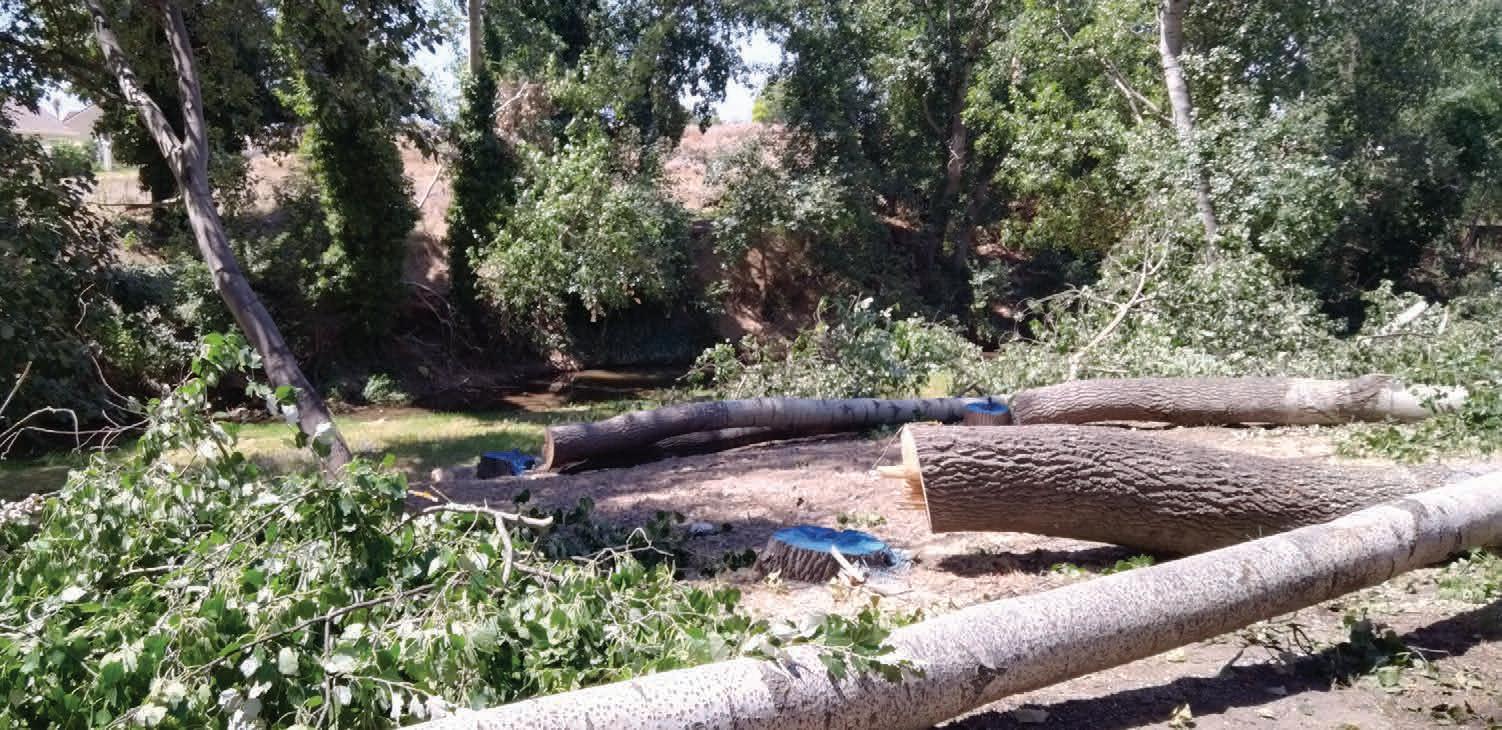
The Ceres River Restoration programme
When major floods hit the Ceres region in May last year, causing considerable damage, the need for the Ceres River Restoration Programme became more pressing, writes
HEATHER DUGMORE
Along the Dwars River running through the town of Ceres in the Western Cape, 16 young people employed by the local Witzenberg Municipality cleared substantial amounts of litter and waste as part of a river restoration programme. At the same time, a Ceres contractor with a local team removed more than 100 alien invasive trees from the riverine area.
“Funded by the WWF Nedbank Green Trust, the Ceres River Restoration Programme (CRRP), a three-year pilot, is working on over 7km of the Dwars River that feeds into the Breede River – a major water source for the towns and fruit-growing agricultural sector,” explains the Witzenberg Local Municipality project manager and environmental practitioner Michelle Klaasen.
“The programme aims to bring together the community, farmers, businesses and the municipality to work together to restore river health and achieve a healthier, more resilient and climate change-adapted environment.”
In June 2023, the programme was already underway when major floods hit the region, causing considerable damage. The floods highlighted the necessity for this project, which started in October 2022. It also identified significant challenges in the Dwars River and its tributaries, the Modder and Titus.
These challenges include litter, waste and chemicals in the water, and invasive alien

trees along the riverbanks that use vast amounts of water. “The entire river system is in a state of degradation due to negative human activities,” Klaasen explains.
As part of the CRRP and to build capacity within the municipality, the project appointed environmental resources
“The entire river system is in a state of degradation due to negative human activities.” – Michelle Klaasen
Poplar felling in the riverine area of the Dwars River, Ceres.
44 VOICE OF LOCAL GOVERNMENT ISSU E 44
Wayne Marnewil and learners in Ceres participating in the Green Fingers environmental education programme.

management technician Wayne Marnewil in December 2022. Marnewil has a BSc Honours in Environmental and Water Science with skills and experience in restoration ecology, community engagement and environmental impact assessment processes.
“I’m currently finalising my survey on the Dwars River and its tributaries to determine point and nonpoint pollution sources,” Marnewil explains. “Point pollution is identifiable at its source, such as industrial waste discharged into rivers. Nonpoint pollution includes urban runoff and pesticides from agricultural activities.”
He explains further: “The pollution starts upstream at the informal settlements that produce large amounts of litter and waste, then there are the fruit farmers who use pesticides and herbicides that leak into the river. Downstream are fruit export and fruit juice and fruit pulp factories that use chemicals and produce industrial waste.”
The municipal litter and waste removal team – part of the Extended Public Works Programme (EPWP) – has been hard at work. They are filling hundreds of refuse bags that are then transported to the local municipal material recovery facility in Ceres, where the litter gets separated into recyclables and the weight recorded.
“With the alien invasive trees removed, the EPWP team has been trained to apply an environmentally friendly herbicide to stop alien invasive vegetation regrowth,” Marnewil explains. “The next stage is the restoration and
“We have invested in a large variety of indigenous plantsfor planting along the river banks to stop erosion.”
– Wayne Marnewil
rehabilitation of the river banks, in which they will also assist. We have invested in a large variety of indigenous plants for planting along the river banks to stop erosion,” says Klaasen.
Local indigenous plant specialist Johann van Biljon of Intaba Environmental Services based in Tulbagh, who is involved in river restoration programmes in the Breede and Berg catchments, is helping with the Dwars River restoration programme. “He has his own nursery and we bought the plants from him,” Klaasen continues. “We also received additional funding from Old Mutual Insure to upgrade Ceres’ municipal nursery to propagate plants.”
For this pilot programme to succeed, there needs to be a balance between ecological restoration and the participation of all the upstream and downstream communities, farmers and businesses.
“We’ve had several meetings with private landowners to explain the programme and recognise the importance of their respective needs,” Klaasen explains. A steering committee
of residents in the area has been formed, and there has been a good response, including from farmers and landowners who are assisting with alien invasive vegetation removal.
The fruit growers and factories have also been responsive to discussions about how to contain pollutants and use alternative, more environmentally friendly pesticides and herbicides.
SCHOOLS’ AWARENESS AND EDUCATIONAL PROGRAMME
Environmental resources management technician Wayne Marnewil is involved in the Green Fingers Environmental Awareness and Educational Programme in partnership with CapeNature, Intaba Environmental Services and a retired local teacher. It is facilitated at seven schools in the Witzenberg Municipality.
Grade 6 to 10 learners and their teachers participate in environmental conservation and sustainability lessons and projects. They learn about the importance of clean, unpolluted rivers and catchments, waste management and recycling. The learners make posters from recycled materials.
“We also show them how to identify indigenous and alien invasive vegetation and trees and explain the importance of indigenous vegetation for a healthy environment,” Marnewil says.
“The educational programme is aligned with the environmental calendar for the year. In March – National Water Month – we introduced learners to a simple tool used to monitor the health of a river,” Marnewil adds.
“In May last year, the learners were each given an indigenous plant and taught how to care for and nurture it. In September, which is National Arbor Month, we assessed their plants. Each learner whose plant survived received R5, and they will replant their plants at the river.”
IMAGES: WWF NEDBA N K, GREEN TRUS T
ISSUE 44 VOICEOF LOCAL GOVERNMENT 45 SERVICE DELIVERY
Learners in the Ceres region participating in a Green Fingers environmental education lesson.
Tackling homelessness
The City of Johannesburg’s Social Development Department has taken a bold step in addressing homelessness with the construction of a displaced persons shelter in Devland/Freedom Park
The Johannesburg Development Agency (JDA), the City’s infrastructure arm, is pleased to announce the commencement of construction on a new displaced persons shelter in Region G.
A sod-turning ceremony in Devland, Johannesburg on Monday 4 December marked the construction of the R50-million shelter that will provide temporary accommodation to males and females in need within Region G and its surrounding areas.
Homelessness is a complex challenge affecting many individuals in communities, and the City of Johannesburg is committed to taking proactive measures to address this issue in its region.
The construction of this vital facility, with a 200-bed capacity, marks a significant step towards creating a safer and more supportive environment for those without stable housing.
The shelter will be located at Sodiak Circle in Devland, Ward 119 and will assist displaced males and females as follows.
• Provide a space to sleep, conduct business during the day, and comfort, knowing they have a haven to rest in the evening.

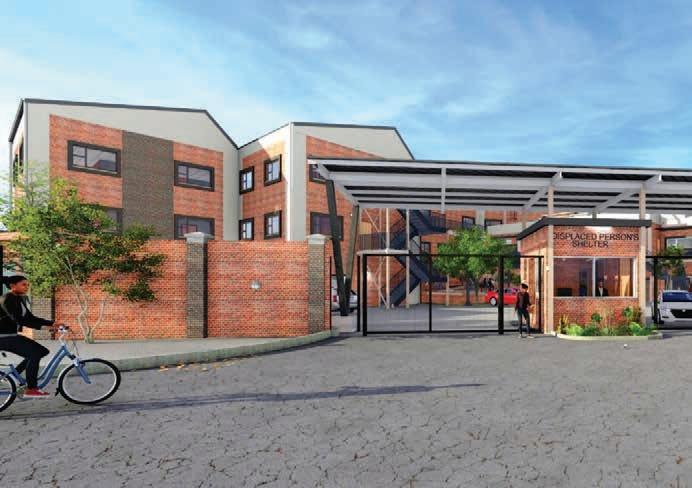
• Access to three meals a day, ablution facilities, a skills development programme and reintegration to the community as fully functional members of society after social work intervention.
• Assistance to beneficiaries addicted to substances to gain admission into substance abuse treatment centres.
• Assistance in reuniting beneficiaries with their families and reintegrating into society. In addition, the displaced persons will:
• assist businesses badly affected by the influx of displaced persons to get back to their original state or even improve;
• assist with bylaw enforcement in the most affected wards in the region; and
• decrease crime hotspots in the region, especially Ward 9 in Lenasia, as criminals hide among vulnerable street people. The displaced person’s shelter aligns with the city’s broader commitment to social development, inclusivity and creating a city that cares for all its residents.
The modern facility will include a guardhouse, parking area, generator room, admin block, three social worker offices, medical room, gym area, after-school care, garden and a caretaker’s house. The facility will also feature a skills centre and a 90-seater boardroom.
THE JDA’S ROLE
THE JDA, a wholly owned entity of the City of Johannesburg, combines a social, economic and environmental mandate as an area-based development agency with project management

capabilities and is thus suitably placed to co-ordinate this project.
The JDA’s implementation of the facility will include, but not be limited to:
• site establishment and bulk earthworks;
• excavations and foundation works;
• civil and structural works, including new columns and suspended slabs;
• brickwork and plaster;
• facade installations;
• electrical and mechanical installations;
• finishes, including furniture installation;
• landscaping and garden; and
• new fence installation, including the guardhouse.
Speaking at the sod-turning ceremony, JDA acting CEO Siyabonga Genu, said: “As we break ground on this essential project, we recognise the importance of fostering compassion and understanding in our community. Working in collaboration with various departments, stakeholders and the community, the JDA is dedicated to delivering this vital facility in time and within budget.
“We are committed to delivering a facility that not only meets the highest standards of construction, but also contributes to the wellbeing and dignity of those who will find shelter within its walls,” he added.
The displaced person’s shelter aligns with the city’s broader commitment to social development, inclusivity and creating a city that cares for all its residents.
IMAGES: SUPPLIED
46 VOICE OF LOCAL GOVERNMENT I SS UE 44 SERVICE DELIVERY – GAUTENG
Annual Karoo Small Town
Regeneration Conference
SALGA hosted the seventh annual Karoo Small Town Regeneration Conference in September 2023 in Springbok, Northern Cape
The SALGA small town regeneration (STR) initiative was launched in 2013 and is led by SALGA’s Economic Development and Planning Directorate (EDP) in four provinces – the Eastern Cape, Free State, Northern Cape and Western Cape.
Its primary aim includes ensuring co-ordination, integration and harmonisation of socioeconomic infrastructure investments. It is also aimed at ensuring economic growth and job creation initiatives and discussing spatial transformation strategies in accordance with a shared vision and set of development objectives for the Karoo region.
The conference is presented with the resolutions and progress made on the outcomes of the annual conference held in Oudtshoorn in the Western Cape in 2022.

Representatives from over 40 Karoo municipalities spanning the four provinces and selected relevant national and provincial departments were in attendance.
The Karoo Small Town Regeneration initiative aims to strengthen the municipal sector by increasing the capacities of the municipalities across the Eastern Cape, Free State, Northern Cape and Western Cape.The delegates were introduced to members of the newly established Karoo IGR Forum under the leadership of Councillor Rhoode Itumeleng. The forum provides a formal conduit for political and technical intergovernmental collaboration, co-operation, integration and harmonisation of the initiation, strengthening and support of spatial social and economic development in the region and sub-regions.
DEVELOPMENTS AND DISCUSSIONS
The Department of Agriculture Land Reform and Rural Development (DALRRD) also embarked on preparing a Regional Spatial Development Framework for the Karoo region in terms of the Spatial Planning and Land Use Management Act, Act 16 of 2013 (SPLUMA) within 18 months, commencing in mid-June 2020 and concluding in December 2021.
The DALRRD has appointed a multidisciplinary service provider team to assist with this process. This was launched at the 2022 Karoo STR Conference.
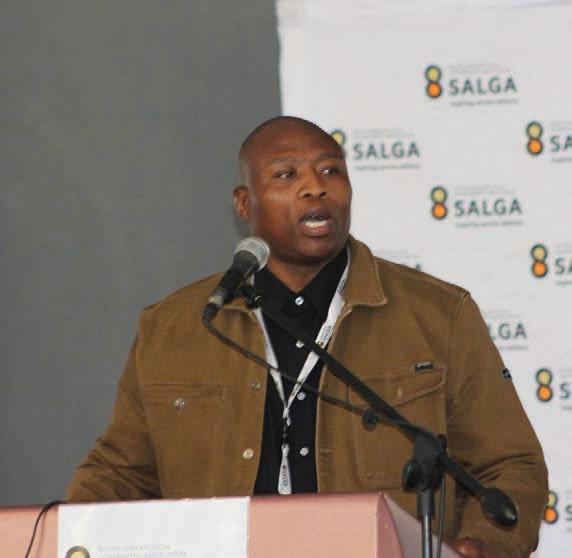


The conference’s one-and-a-half-day programme included discussions on innovation mapping in the Karoo region with an update on technology innovations in line with the regional, provincial and national Spatial Development Frameworks to enhance the development of small towns in the Karoo. The highlight of the conference was the announcement of the notice of the approved Karoo Regional Spatial Development Framework in terms of Section 18(1) of the SPLUMA, wherein the Minister of Agriculture, Land Reform and Rural Development, Thoko Didiza, gazetted the framework after consulting with relevant premiers and municipal councils in the Karoo region.
The Karoo Small Town Regeneration initiative aims to strengthen the municipal sector by increasing the capacities of the municipalities across the Eastern Cape, Free State, Northern Cape and Western Cape.
IMAGES: SUPPLIED
A group of Nama dancers provided entertainment at the conference.
Deputy chairperson of the Karoo IGR Forum Councillor Vania Davids facilitating session three of the programme.
ISSUE 44 VOICE OF LOCAL GOVERNMENT 47 SERVICE DELIVERY – NORTHERN CAPE
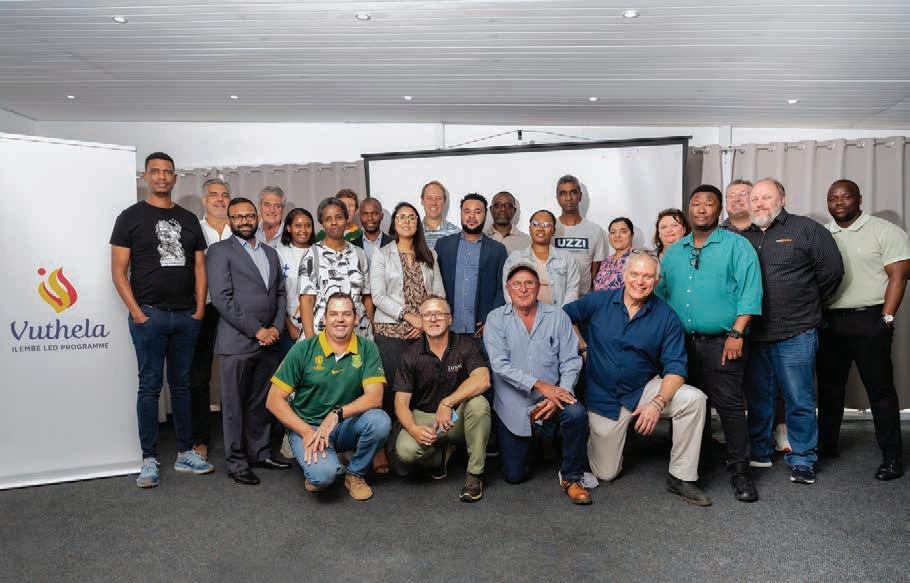
Options for reliable electricity supply in Kwadukuza
The Vuthela iLembe LED Support Programme’s Synergy for Energy seminars held recently unveiled the range of options available to secure reliable electrical power in the KwaDukuza local municipal area
The two Vuthela seminars examined how public and private sector stakeholders need to collaborate with local and national entities to counter the devastating impact of the ongoing load-shedding crisis.
Load shedding and the lack of a reliable power supply are hindering the municipality’s capacity to cater for growth and have had a big impact on the ease of doing business in the district, said Sibusiso Jali, executive director: Electrical Engineering Business Unit at KwaDukuza Local Municipality.
Recent regulatory developments are changing the energy landscape significantly.
The KwaDukuza Local Municipality receives all its electricity from Eskom at present. In the future, this supply will be augmented by electricity provided by Independent Power Producers (IPPs), who may produce it from solar, hydroelectric, biomass, gas or ocean resources if feasible.
Jali said that a draft policy on appointing IPPs has been developed and the process for appointing a service provider to undertake feasibility studies to procure IPPs has begun.
A project is also underway to review tariffs, contracts and metering systems for resellers of electricity, including housing estates, shopping centres, malls, apartment buildings and business parks.
REGULATORY DEVELOPMENTS IN PROCESS
Locally, the KwaDukuza Local Municipality has approved an energy policy and is developing new regulations to control the implementation of renewable energy options. Nationally, the Electricity Amendment Bill has been introduced formally to parliament. Meanwhile, the process of receiving public comments on the South African Renewable Energy Masterplan (SAREM) has been completed. The plan is expected to be finalised by November this year, and implementation will begin immediately.
These major regulatory developments will require public and private
stakeholders to continue engaging and collaborating on plans to produce alternative energy supplies.
The KwaDukuza Local Municipality Council has approved the Energy Policy on the understanding that it will be amended frequently, confirmed Chimene Pereira, director: special projects at KwaDukuza Local Municipality, who managed the policy development process.
The next step will be to conduct a feasibility study around the best approach for the KwaDukuza Local Municipality related to the cost of supply and its current infrastructure.
“The cost-related implications are not fully understood,” said Pereira. “There is potential for revenue losses, and tariffs must still be determined. We are not entirely sure what the financial implication for local government will be under the new policy.”
The new policy will change how electricity is generated and procured, with the council playing a greater facilitation role in the process.
Generation strategies will include embedded power systems, such as installing rooftop solar PV systems on municipal buildings with or without feeding into the municipal grid. This could be financed through the municipality’s balance sheet, debt or grants.
It may also include building stand-alone power plants, such as large wind farms or solar parks, on municipal land with the possibility of selling surplus power to Eskom. This could be financed through debt or grants, public-private partnerships, operational agreements or special purpose vehicles with other municipalities and partners.
Municipalities will play a facilitation role by buying electricity from local producers and selling it to willing customers. They may also store excess electricity and sell it when the demand is high and provide electricity services, for example, installations and maintenance for a fee.
“A draft policy on appointing IPPs has been developed and the process for appointing a service provider to undertake feasibility studies to procure IPPs has begun.” – Sibusiso Jali
48 VOICE OF LOCALGOVERNMENT I SSUE 44
Richard Clacey, programme manager of the Vuthela iLembe LED Support Programme, and Gerhard Pienaar, deputy head of Swiss Economic Cooperation and Development.
WHAT THE CRITICS SAY
Commenting on aspects of the KwaDukuza Municipal policy, Sinawo Sigalelana, senior project co-ordinator from Sustainable Energy Africa, says it is progressive and promotes the uptake of embedded generation for KwaDukuza. The policy clearly articulates the requirements for connecting Small Scale Embedded Generators (SSEG) and confirms that customers can be compensated for feeding back to the grid once a NERSA-approved SSEG tariff is in place.
However, the policy lacks guidance on embedded generation that is not small-scale, and standards are not explicit.
Sigalelana notes that all embedded generation must adhere to the South African Grid Code, which specifies standards and connection specifications.
UNPACKING THE ELECTRICITY AMENDMENT BILL AND THE SAREM
The Electricity Regulation Amendment Bill seeks to create a competitive multimarket electricity supply industry managed by a transmission system operator.

The ERA Amendment Bill will allow market participants to trade with each other, registered generators to enter into private power purchase agreements (PPAs) with direct customers and generators to form PPAs with transmission system operators.
The poor performance of Eskom’s generation unit is the cause of national load shedding. It is expected that
Generation strategies will include embedded power systems, such as installing rooftop solar PV systems on municipal buildings with or without feeding into the municipal grid.

Attendees participated in a Policy and Practice dialogue to consider issues related to ways of addressing the anticipated reduction in municipal revenue following extensive uptake of renewable energy options, the pros and cons of tariff regimes, whether renewable energy can provide enough energy for the base load and the socioeconomic dimensions of renewable energy.
unbundling Eskom will lead to more competitive generation and allow dedicated transmission and distribution companies to expand their operations.
The SAREM aims to support market demand for renewable energy, drive industrial development, foster inclusive development and build local capabilities in the renewable energy sector. The intention is to capitalise on the growing renewable energy and battery storage market and to use the opportunity for inclusive industrial development.
The 18-month-long process of developing the SAREM involved labour unions, industry players and community representatives who came together to create a social compact that supports national objectives and promotes the development of renewable energy value chains.
AN EFFECTIVE ENGAGEMENT PLATFORM
The Vuthela Programme, funded by the Swiss State Secretariat for Economic Affairs, came to an end at the end of 2023. However, participants who say they have derived great value from the seminar series have decided to continue interacting after the funded programme ends.
Enterprise iLembe CEO Linda Mncube says the seminars provided the engagement platform needed for effective collaboration and should be continued into the future.
The need for effective partnerships and collaboration between the private and public sectors to address the impacts of the national electricity crisis emerged as a central theme at both seminars.
IMAGES: SUPPLIED
I SSUE 44 VOICE OFLOCALGOVERNMENT 49 SERVICE DELIVERY – ILEMBE
Chimene Pereira
SALGA’S Legal Practitioners Forum
SALGA’s symposium of legal practitioners advocates for sensible regulation in local government
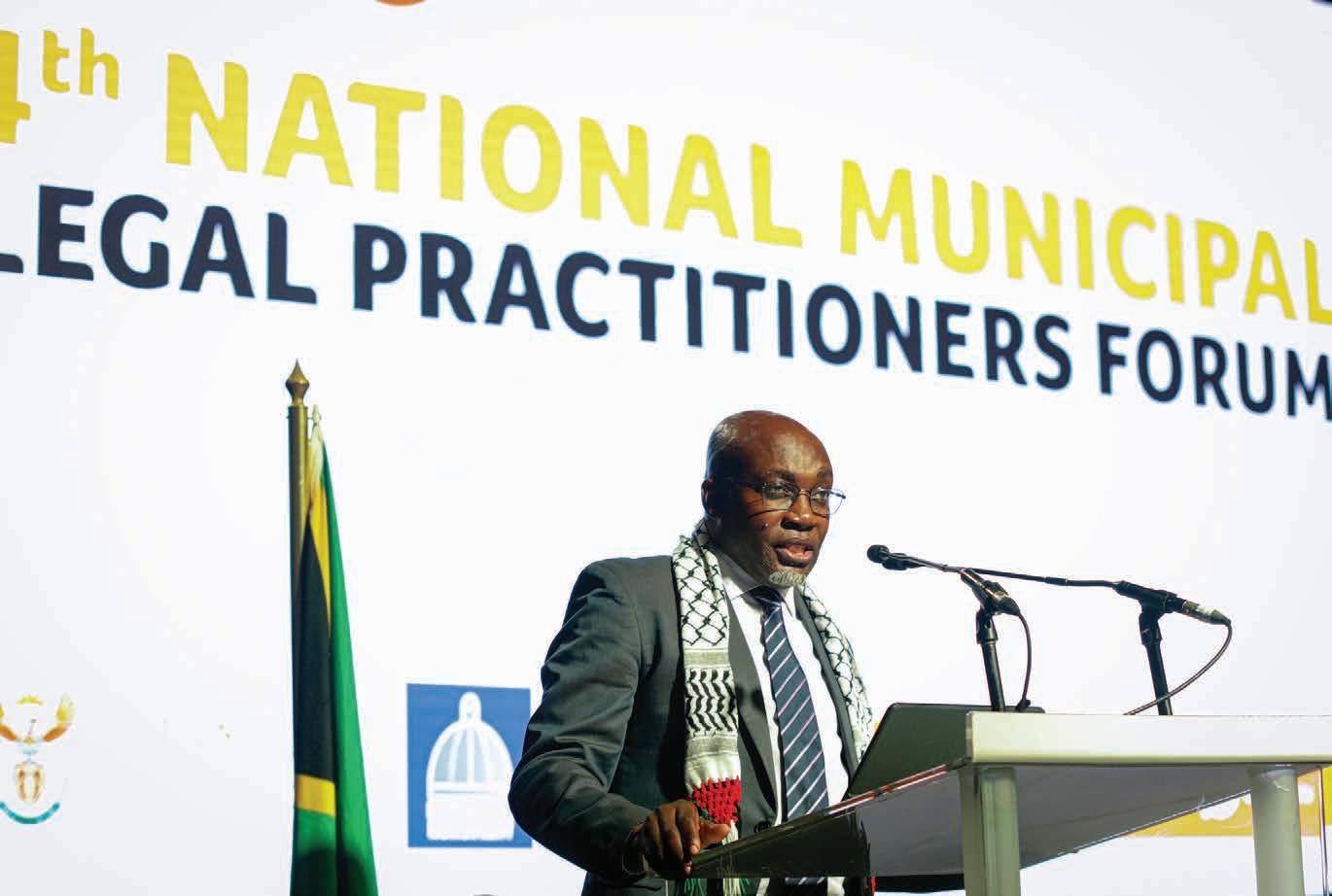
Legal practitioners from municipalities attending the 4th Municipal Legal Practitioners’ Forum (MLPF), held in Durban at the Inkosi Albert Luthuli International Convention Centre, during March this year heard first-hand that some of the legal obstacles confronting local government cannot simply be eliminated by regulations and making more laws.
Speaker after speaker echoed similar sentiments, emphasising that South
African politics require political maturity because regulating certain political behaviour is challenging. Soft issues, such as trust, ethics and co-operation, have proven to be contributing factors in municipalities with stable and successful coalition arrangements.
A TEMPLATE FOR SUCCESS?
Delivering the welcoming address to nearly 300 delegates, eThekwini Municipality mayor Mxolisi Kaunda, whose city has been subjected to illegal strikes that sadly led to loss of life, vandalism of infrastructure and attacks on nonstriking employees, said he
Soft issues, such as trust, ethics and co-operation, have proven to be contributing factors in municipalities with stable and successful coalition arrangements.
50 VOICE OFLOCAL GOVERNMENT I SSUE 44
eThekwini Mayor Mxolisi Kaunda delivers the keynote address at the SALGA Municipal Legal Practitioners’ Forum.

hoped that the symposium would provide municipalities with a template to deal with the harsh legal realities confronting many municipalities. “This meeting comes at a time as eThekwini faces one of the most destructive illegal industrial actions by employees. The city obtained a Labour Court interdict against striking employees, which prohibited unlawful conduct, acts of violence and interference with the city’s activities, services and operations. However, we continue to see more destruction and vandalism of the city’s infrastructure.
“We are sharing this today with the hope that this symposium will use the current situation in the city to reflect on some of the challenges we face as municipalities and develop mechanisms to deal with such incidents before they get out of hand,” he explained.
The mayor urged delegates to intensify programmes to educate municipal employees, whether affiliated with a union or not, about the importance of balancing their right to strike with ensuring the rights of others are not infringed upon as guaranteed by the country’s constitution.
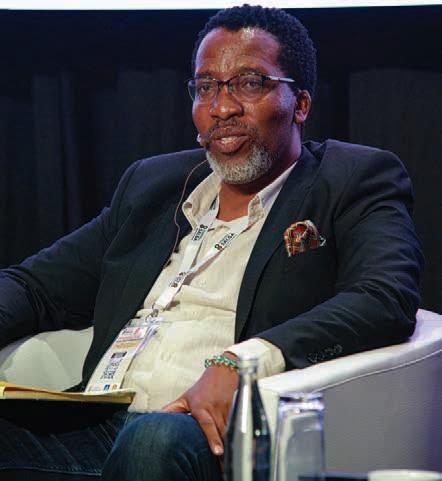
CREATIVE SOLUTIONS
ARE NEEDED
SALGA chairperson for Governance and Intergovernmental Relations Working Group Samkelo Janda stated that the realities of declining public interest in public affairs, declining public trust in the sector and service delivery protests characterised by increased violence and dissatisfaction with local government’s failure to provide uninterrupted basic services are proof that legal services have a major role to play in the continued sustainability of municipalities. Janda said it was time to think creatively about solutions for local government.
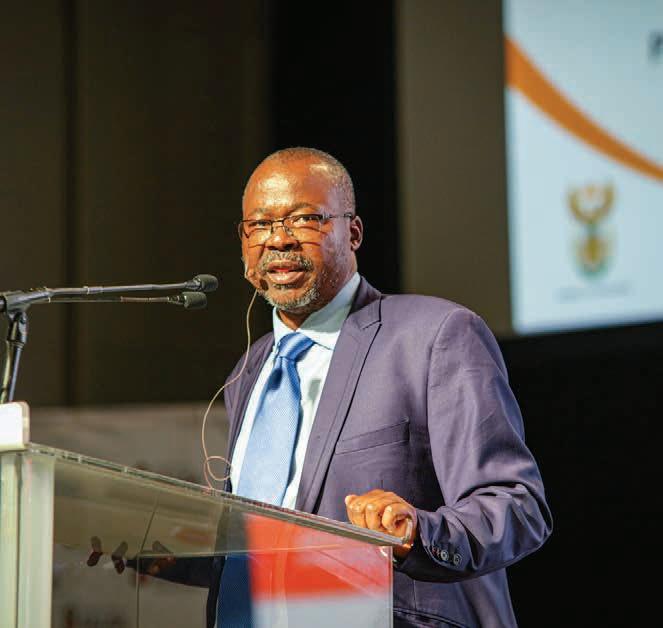
City of Johannesburg unit head, Sekgala Malahlela sharing insights on the legal strategies to deal with the issue of hijacked buildings.
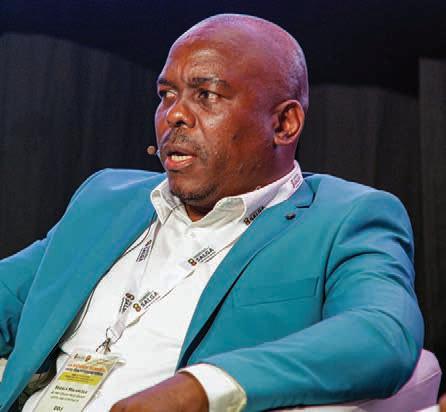


Discussions at the forum centred on the approach and proposed legislative amendments to manage coalition governments and create stability in municipalities, while presentations on the hijacking of buildings provided insights into how cities affected by the scourge are dealing with the issue, along with updates on SALGA’S litigation matters with Eskom and Nersa regarding the Multi-Year Price Determination and Declaratory Order in relation to Energy Reticulation.
“There is a plethora and overabundance of laws intended to structure the internal functioning and processes of local government, with local government-specific legislation totalling 15, regulations totalling 14, of which the Municipal Finance Management Act alone has a staggering 10 regulations and 36 Notices.” Janda said existing laws and regulations treat all municipalities as the same, irrespective of size or competence, often resulting in larger municipalities taking advantage while smaller ones suffer. He emphasised that there was a direct consequence when unrealistic legislative obligations were placed on local government, imposing huge financial, legal and administrative burdens on municipalities.
Unpacking the impact and devastation caused by the attachment of municipal bank accounts on municipalities through the lenses of the affected municipalities – Emfuleni, Mafube Local Municipality, and Kopanong Local Municipality – it became evident that all the municipalities confronted by attachments were in dire situations and required immediate intervention to prevent negative impacts on service delivery and governance.
Overwhelming support emerged from the delegates, who all agreed that SALGA and the Department of Cooperative Governance and Traditional Affairs should lead the support programme, working with other spheres of government to resolve the impasse.
“Declining public interest in public a airs, declining public trust in the sector and service delivery protests characterised by increased violence and dissatisfaction with local government’s failure to provide uninterrupted basic services are proof that legal services have a major role to play in the continued sustainability of municipalities.” – Samkelo Janda
SUPPLIED
IMAGES:
Fhedzisani Pandelani
Stage setup for panel discussion.
ISSUE 44 VOICE OF LOCAL GOVERNMENT 51 IN ACTION
Panel discussions at the SALGA Municipal Legal Practitioners’ Forum.
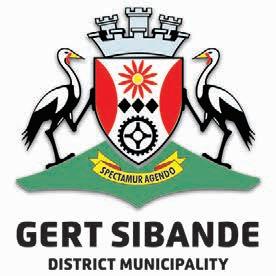
WATER QUALITY TESTING LABORATORY
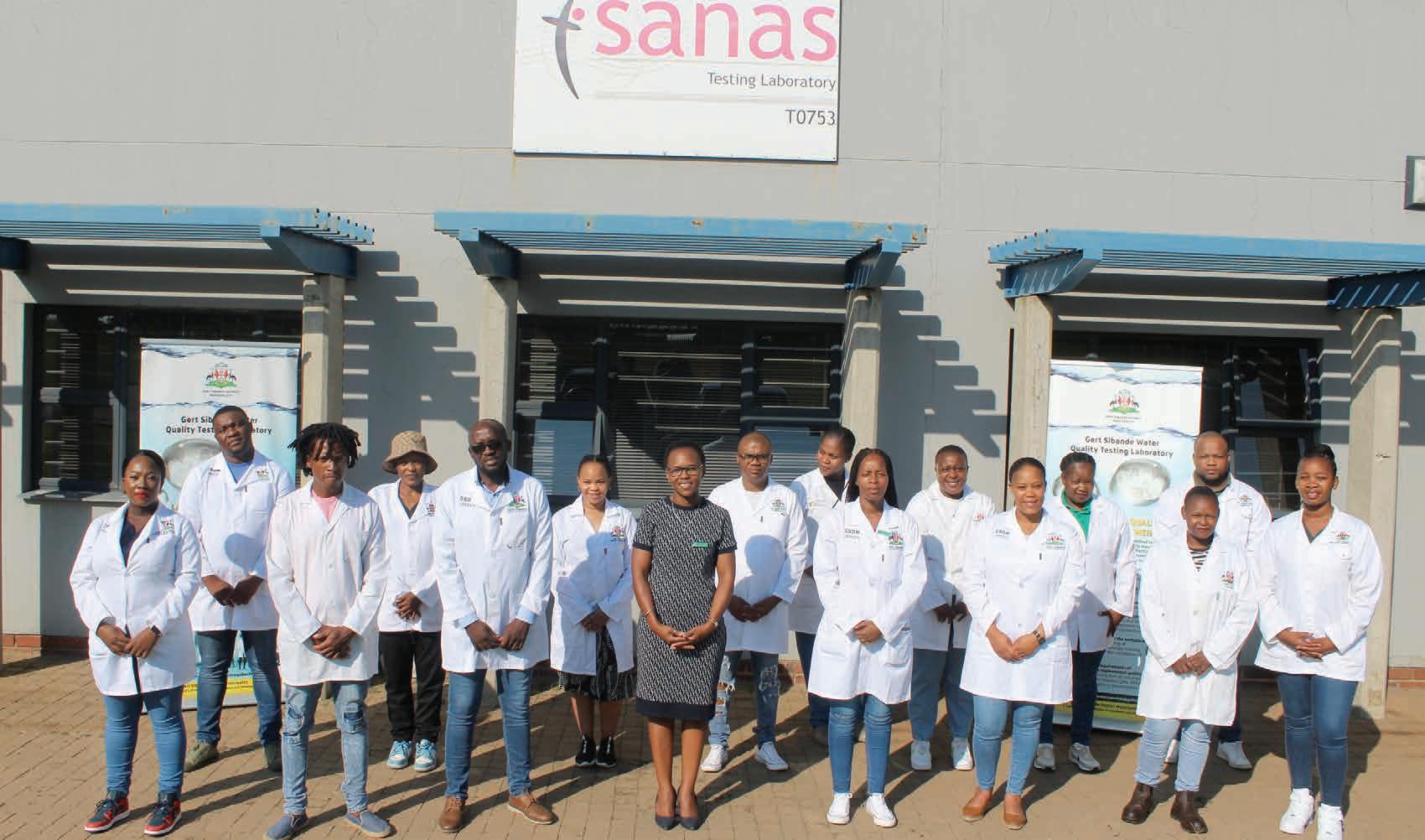
We are excited to introduce our Water Quality Testing Laboratory, situated on the N17 corridor in Ermelo, bounded by the Ekurhuleni Metro of the Gauteng province to the west, Sedibeng District Municipality of the Northern Free State to the southwest, Ehlanzeni District Municipality to the northeast of the Mpumalanga province, Nkangala District Municipality to the north of the Mpumalanga province, Amajuba District Municipality to the southeast of KwaZulu-Natal, and Swaziland to the east.
The laboratory was established 12 years ago with the ultimate aim of guaranteeing the provision of safe
drinking water to millions of citizens, in line with section 9 (1) of the Water Services Act No. 108 of 1997.
The establishment of the water quality laboratory was informed by the need to improve water quality, not only within the district, but also beyond the borders of Gert Sibande, hence its strategic location. This facility is evidence of the vision and commitment by Gert Sibande District Municipality to be “a community-driven district of excellence and development” and is aligned to the National Development Plan’s vision 2030: “To ensure that all South Africans have access to clean running water in their homes.”
The laboratory is not only a SANAS-accredited government-owned water laboratory in the province, meeting the requirements of ISO/IEC 17025:2017, but is also equipped with a highly competent team of scientists committed to providing excellent and efficient service to customers.
SERVICES PROVIDED
• chemical analysis;
• microbiological analysis; and
• physical analysis.
These services are available to all stakeholders and customers, including local municipalities and industries. A pricelist is available on request.
The GSDM Water Testing Laboratory team led by Head of Scienti c Services Ms. Victoria Tshabalala
In addition, the laboratory promotes water quality and care for water in communities through active involvement in awareness programmes offered by local municipalities in the district. It also promotes careers in science by providing opportunities to students in the form of in-service training.
The laboratory boasts the provision and delivery of superior laboratory services and aims to promote and support the development and culture of scientific learning. The Gert Sibande Water Quality Testing Laboratory regards its clients as valuable stakeholders whose interests are a priority for the laboratory.
























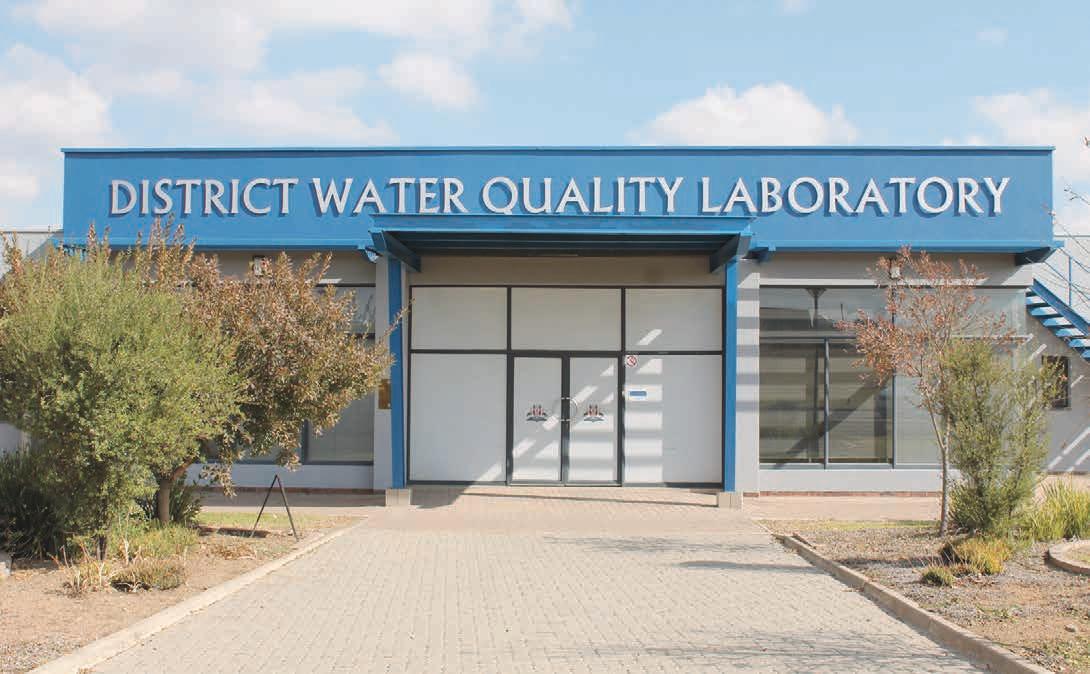
“The only SANAS-accredited government-owned water quality testing laboratory in Mpumalanga Province.”
For more information:
CNR N17 Bethal & Nespan Roads, Cassim Park
P O Box 1748, Ermelo, 2350 017 801 7143
laboratoryservices@gsibande.gov.za
www.gsibande.gov.za

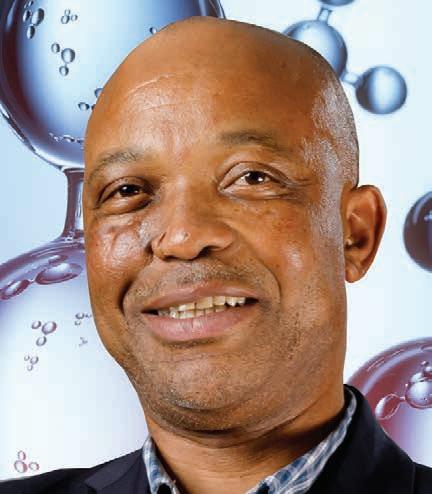



@gertsibandedm @GertSibandeDM
Office Hours
Monday to Thursday: 07h30 to 13h00/ 13h30 to 16h30
Friday: 07h30 to 14h00









 Cllr Walter Mngomezulu Executive Mayor of GSDM
Cllr Walter Mngomezulu Executive Mayor of GSDM
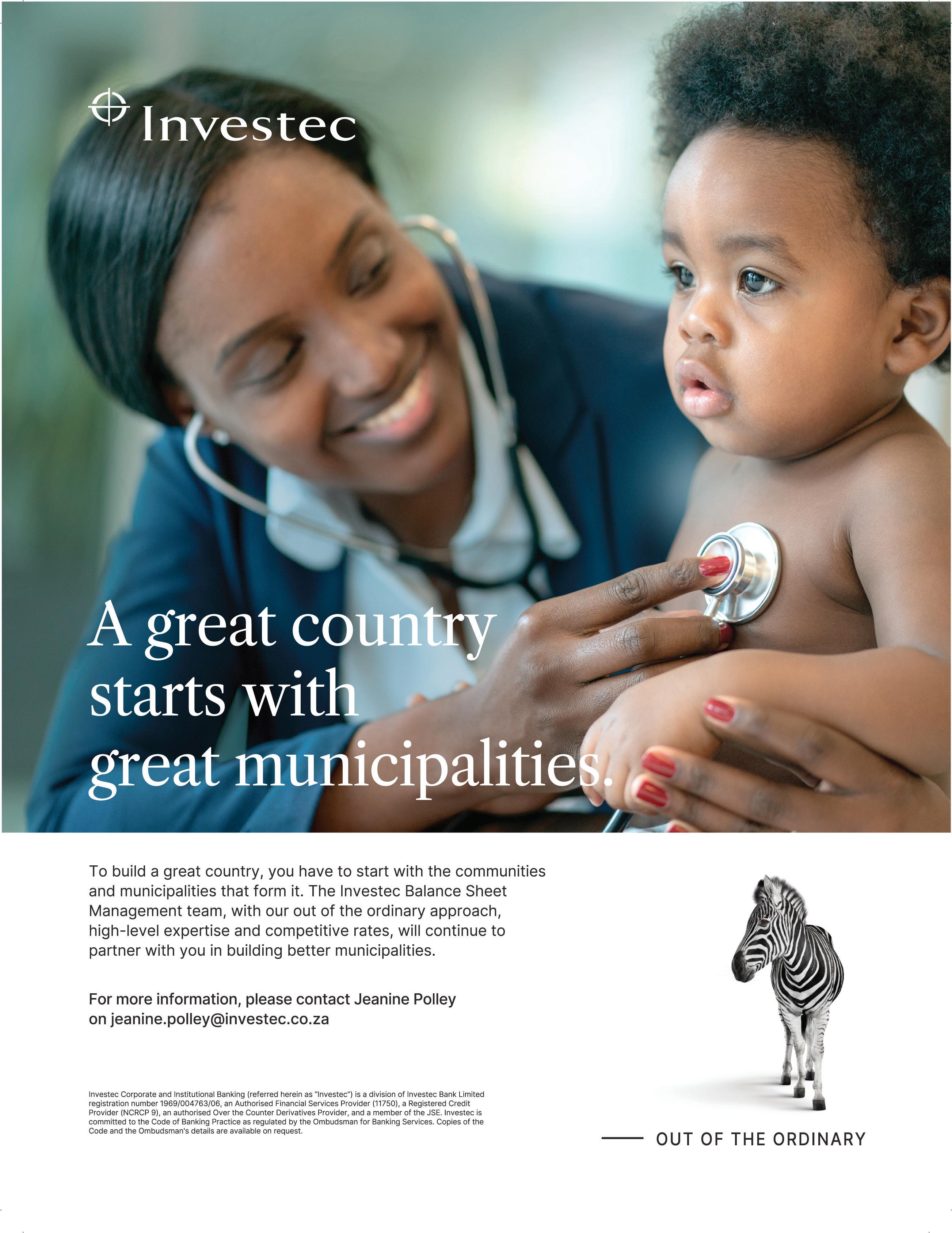





























































































































































































 Professor Anthony Turton
Carin Bosman
Professor Anthony Turton
Carin Bosman



















































































 Cllr Walter Mngomezulu Executive Mayor of GSDM
Cllr Walter Mngomezulu Executive Mayor of GSDM
